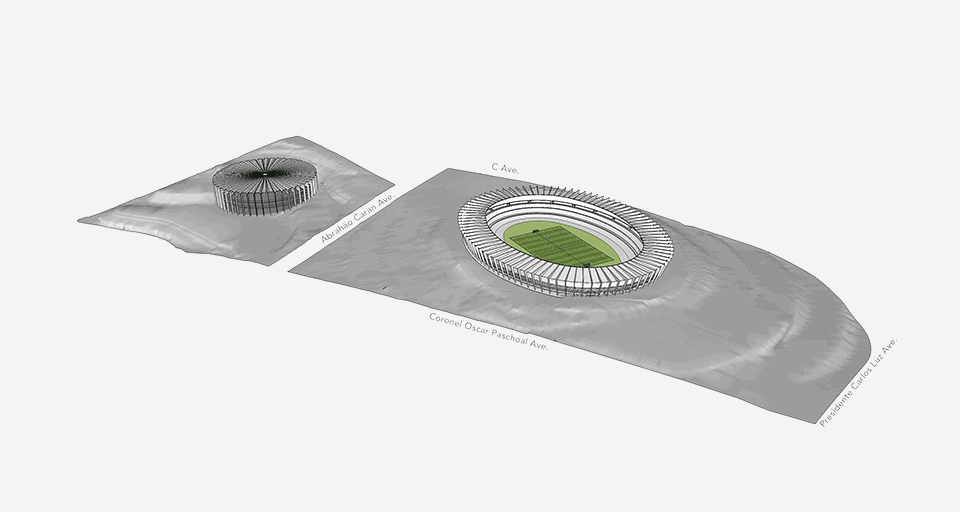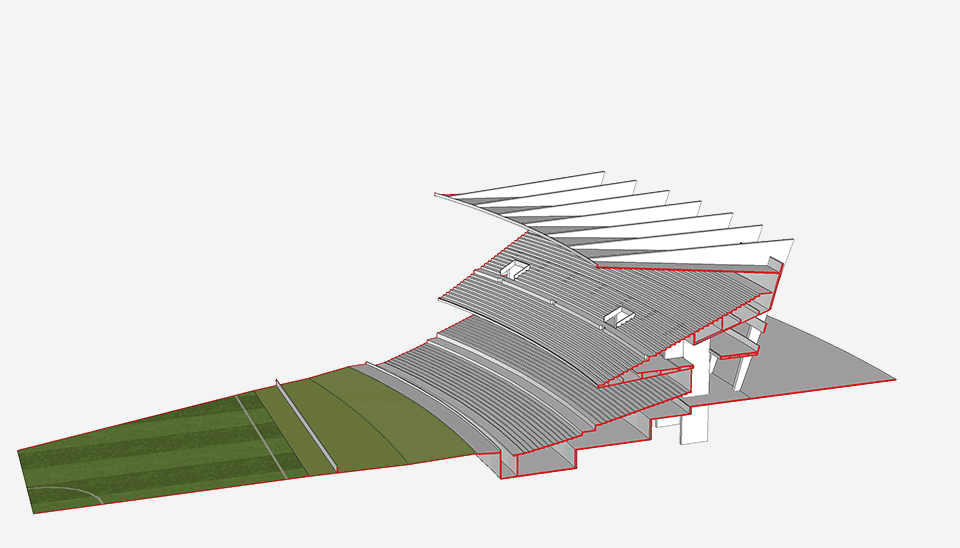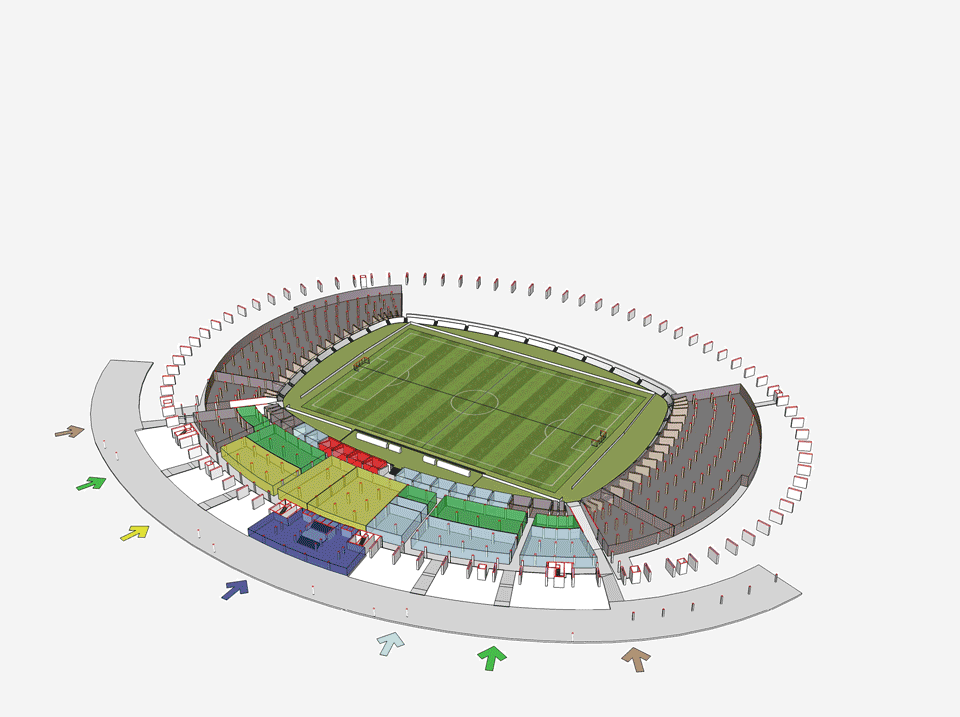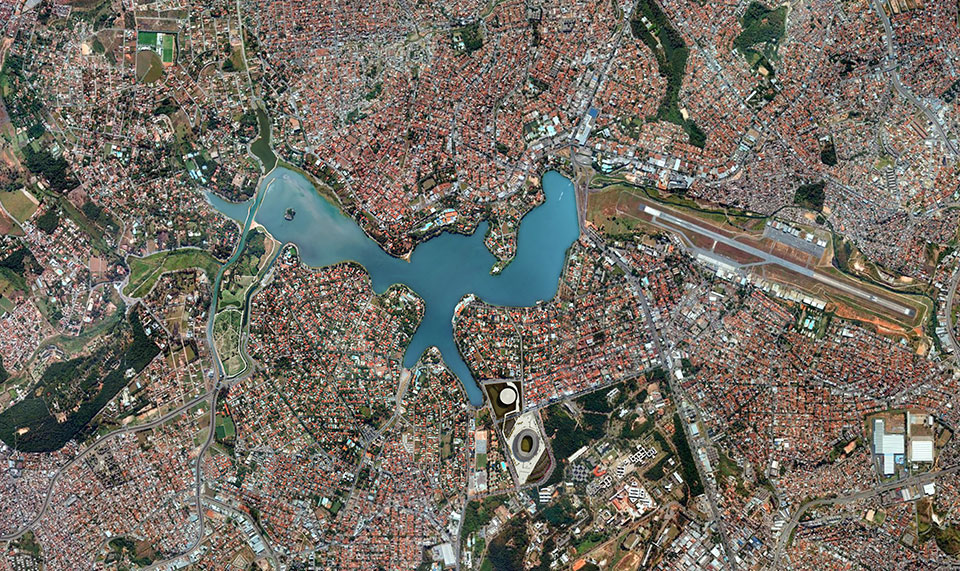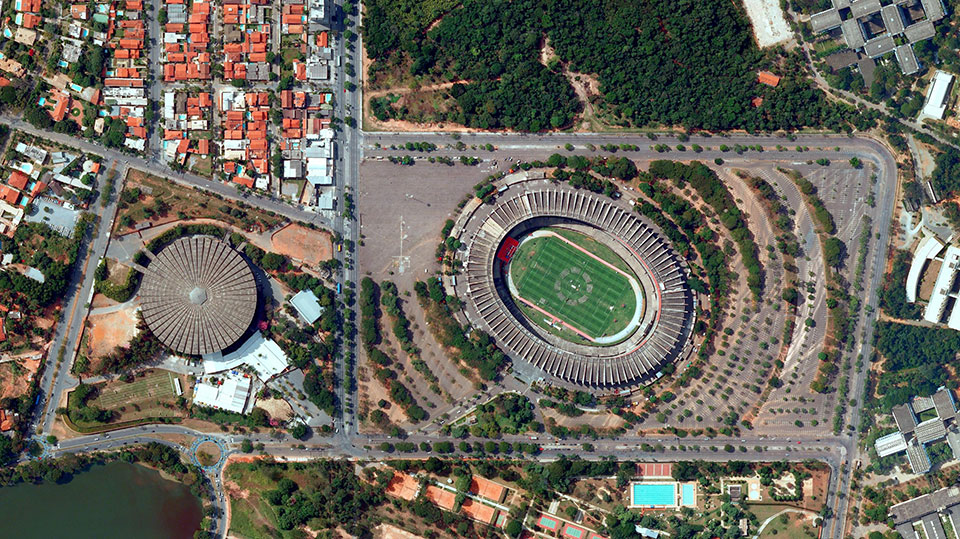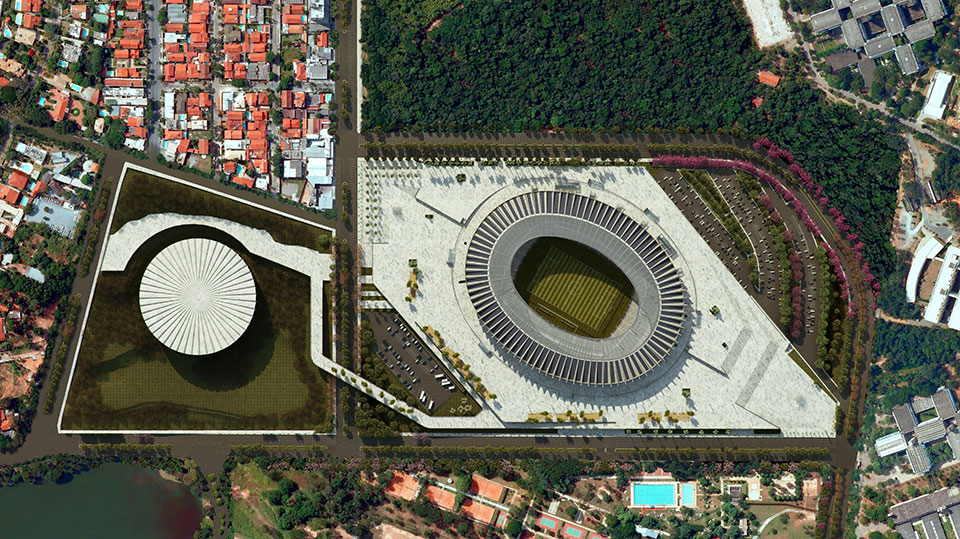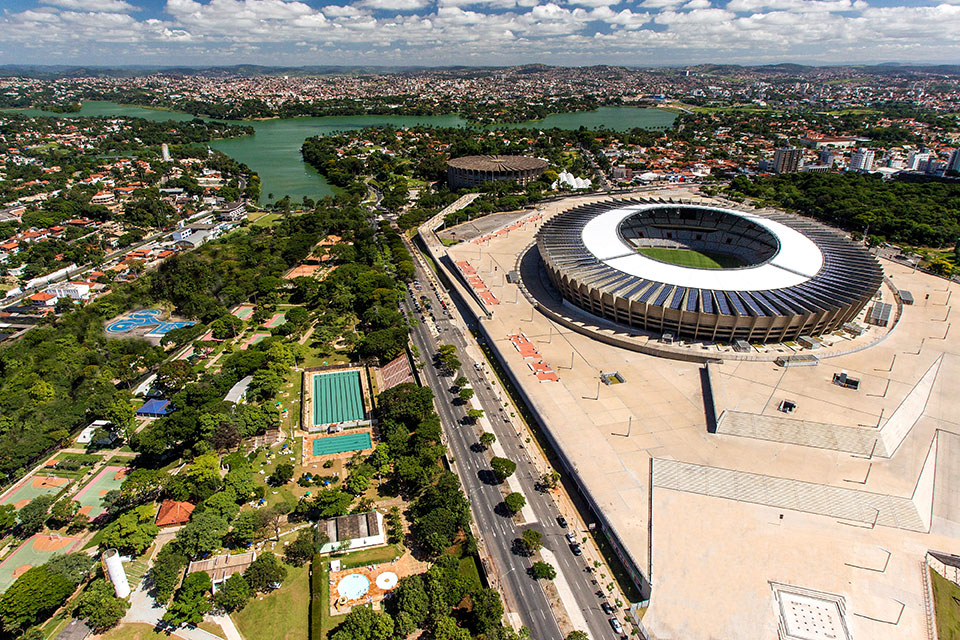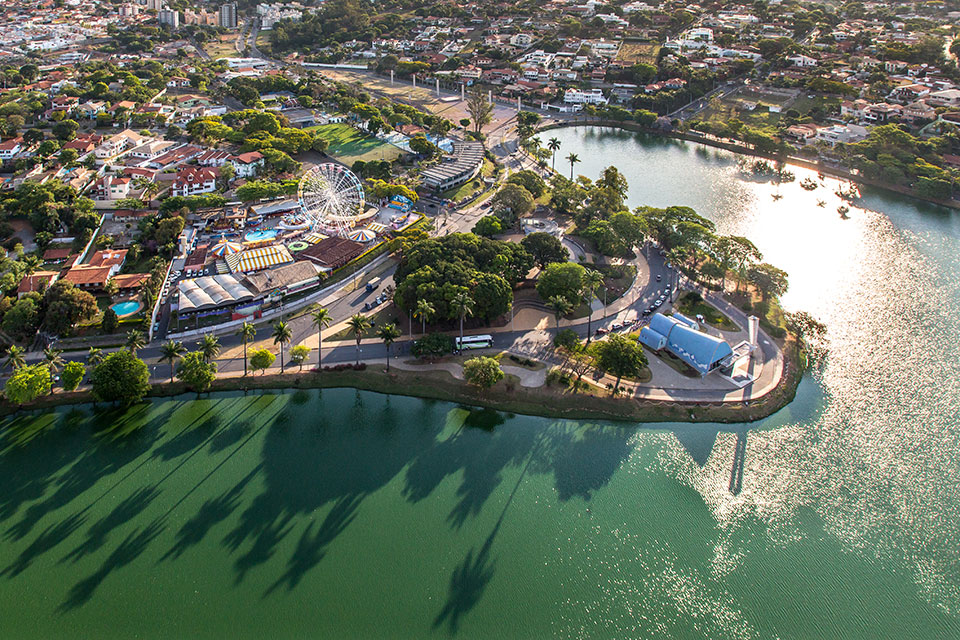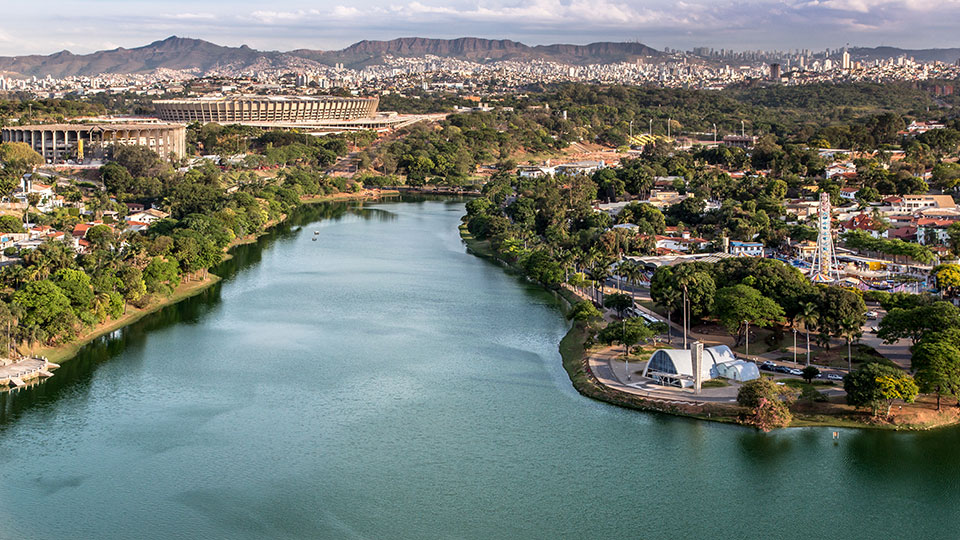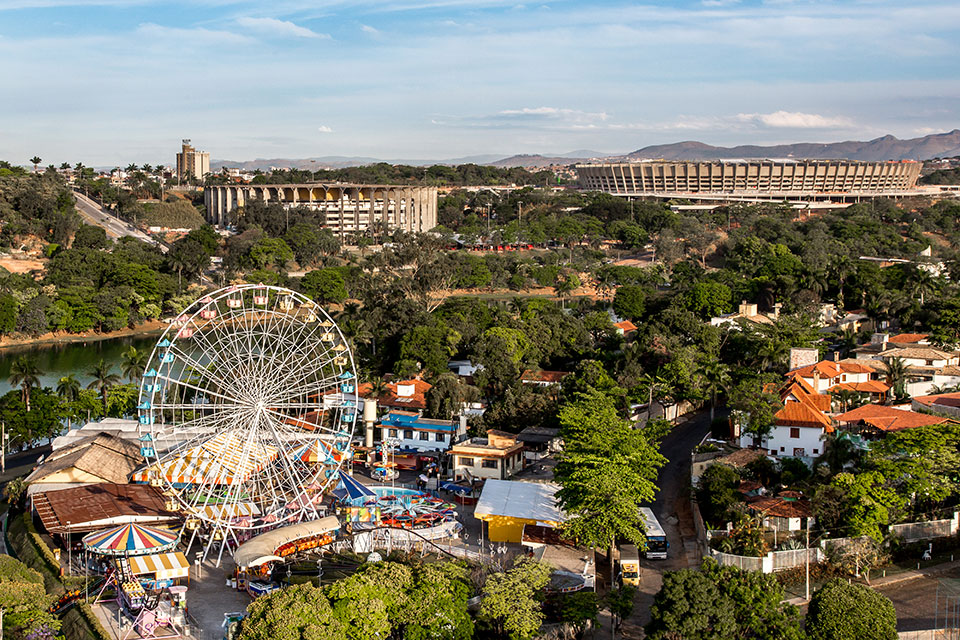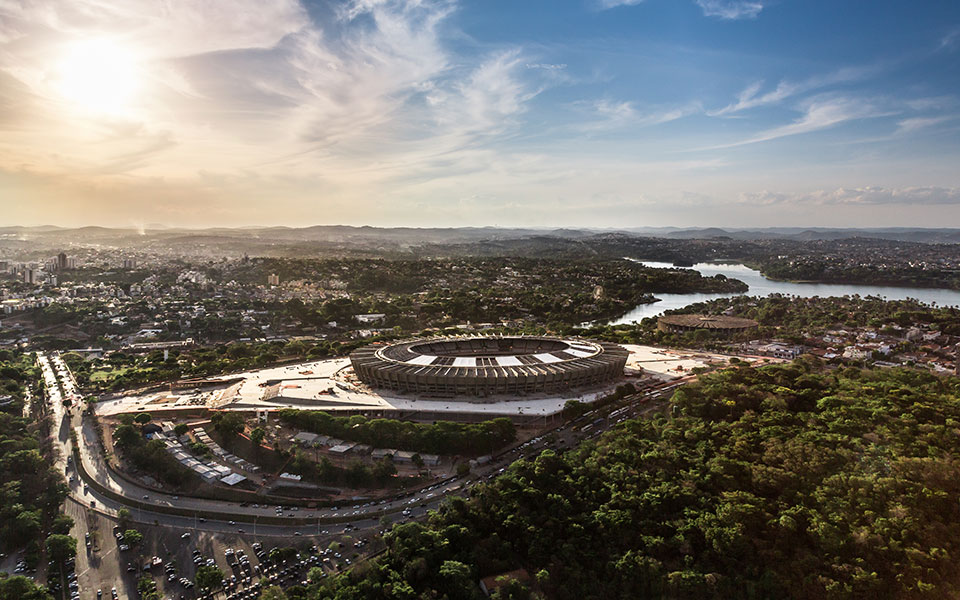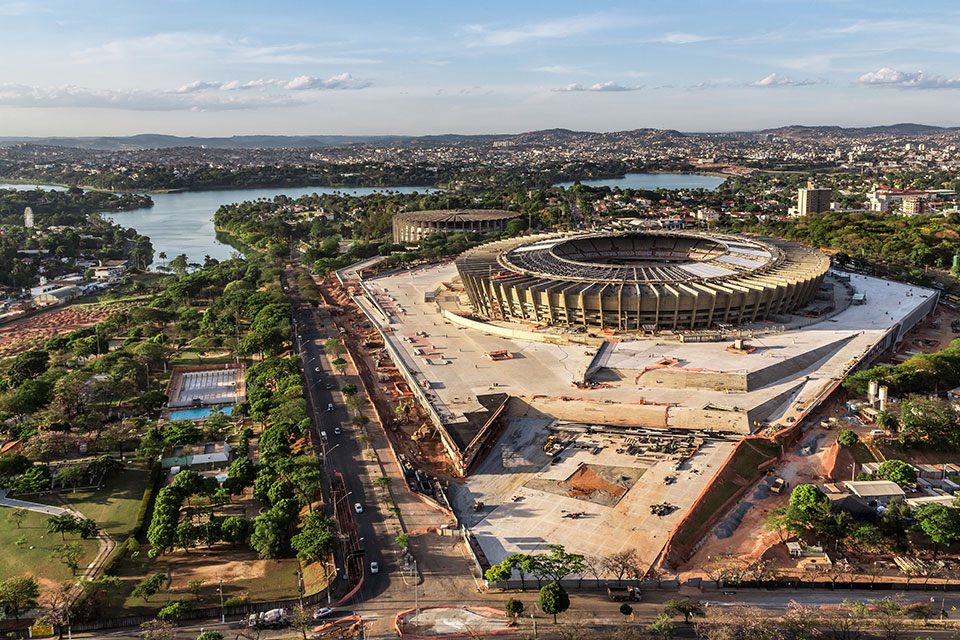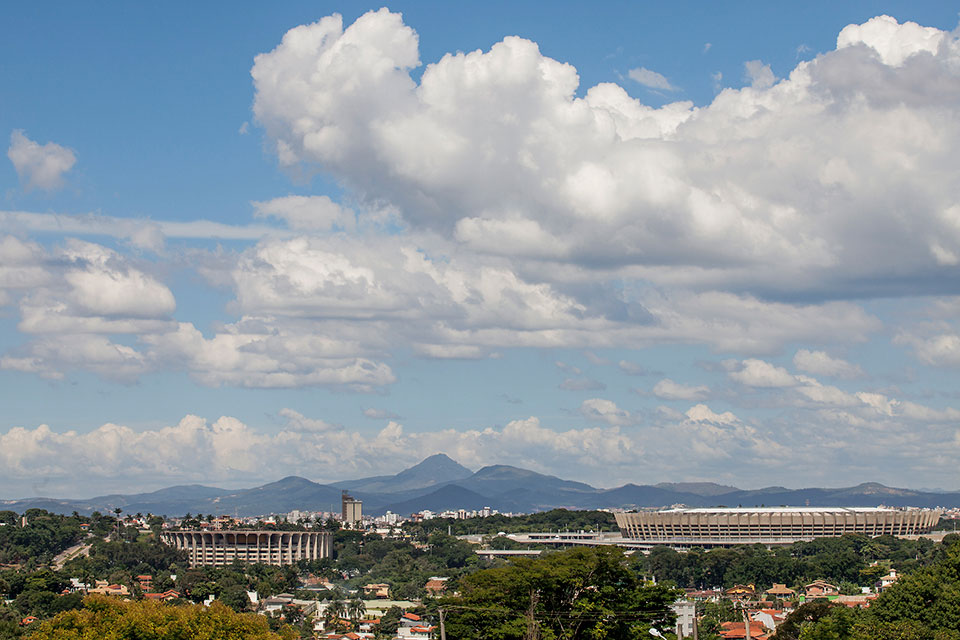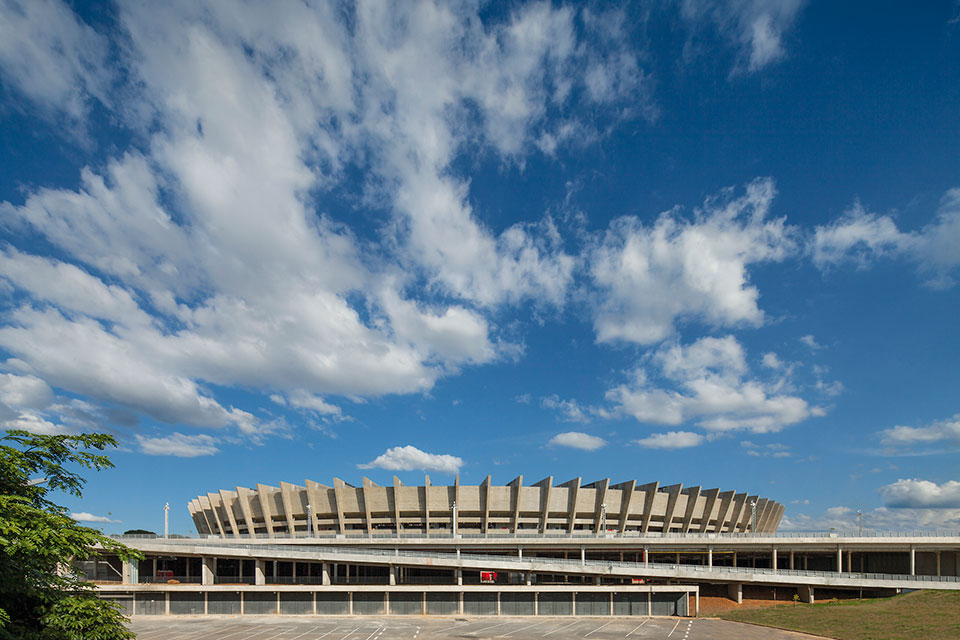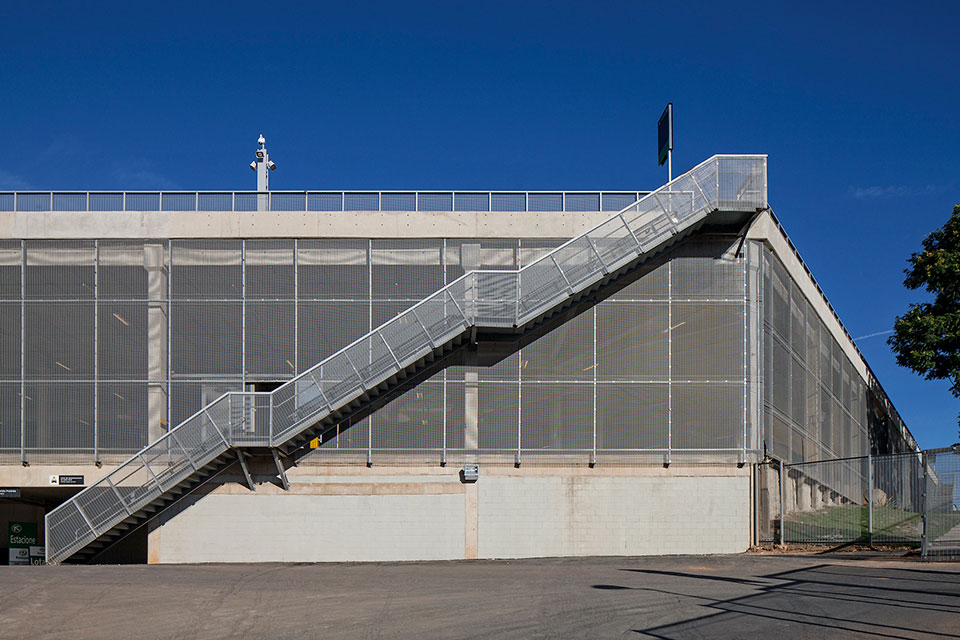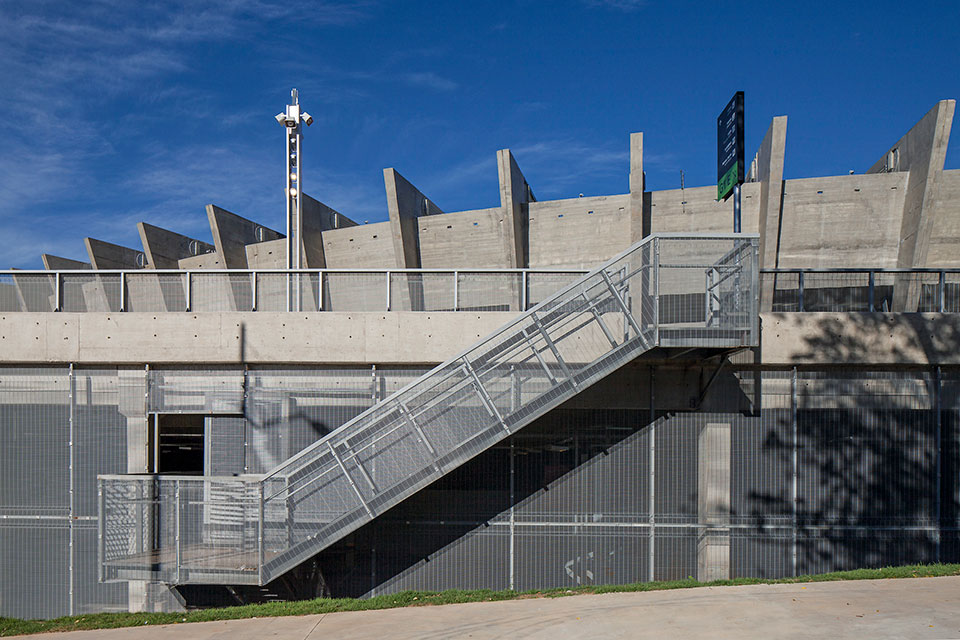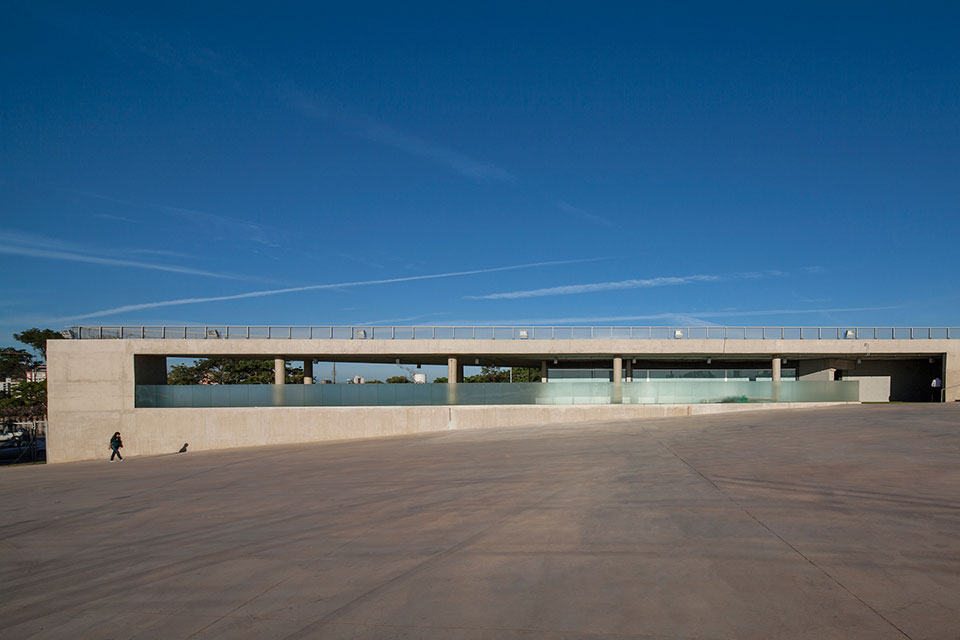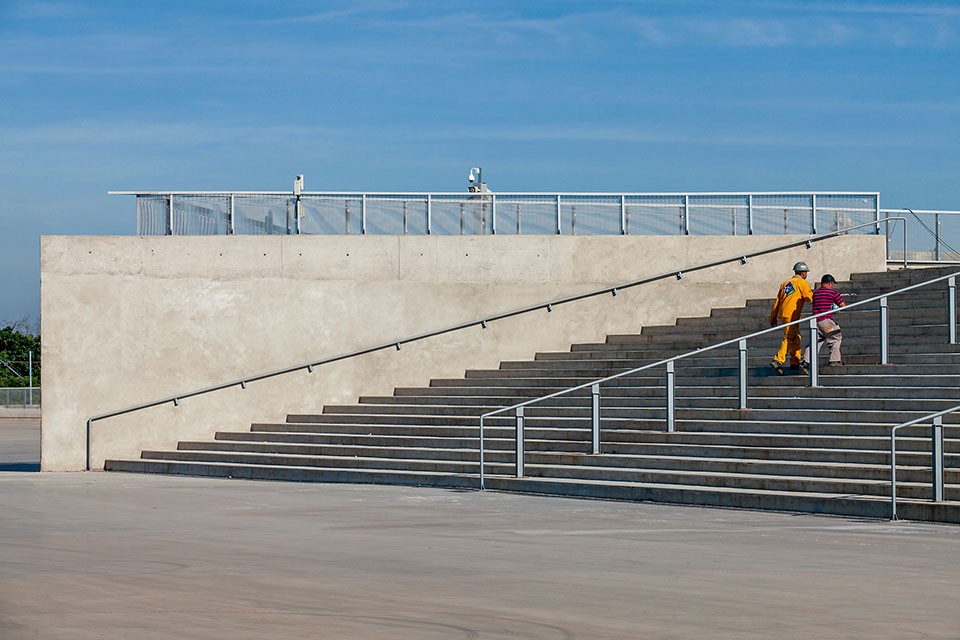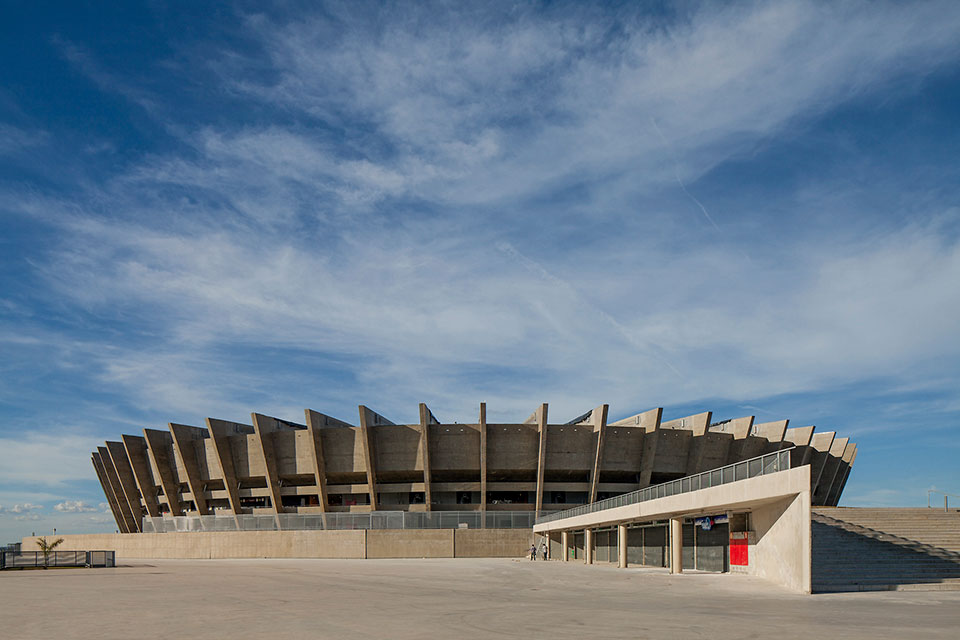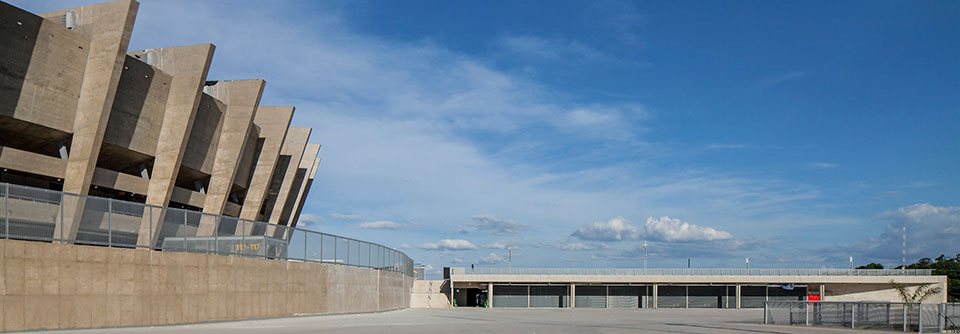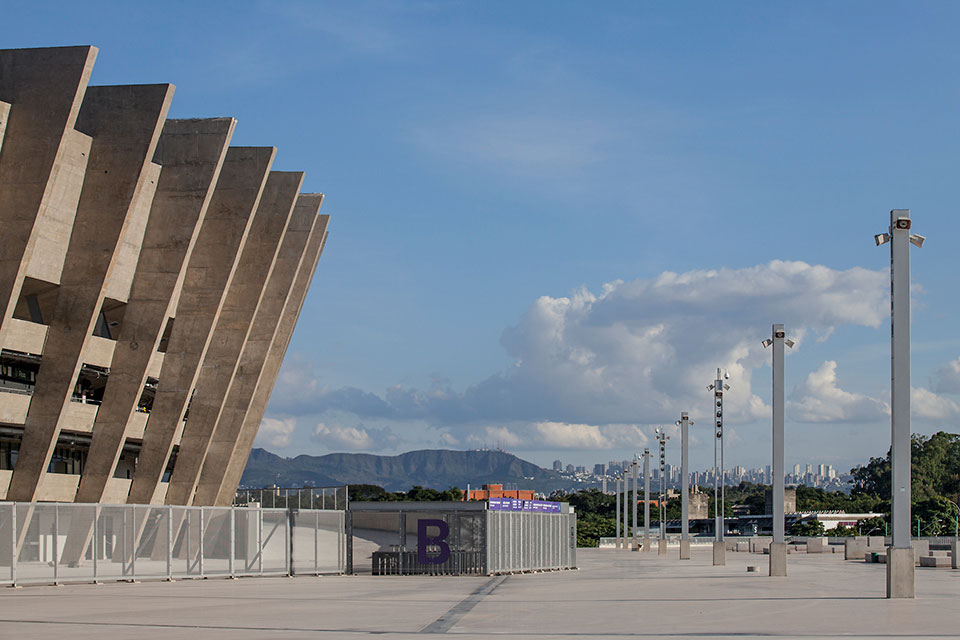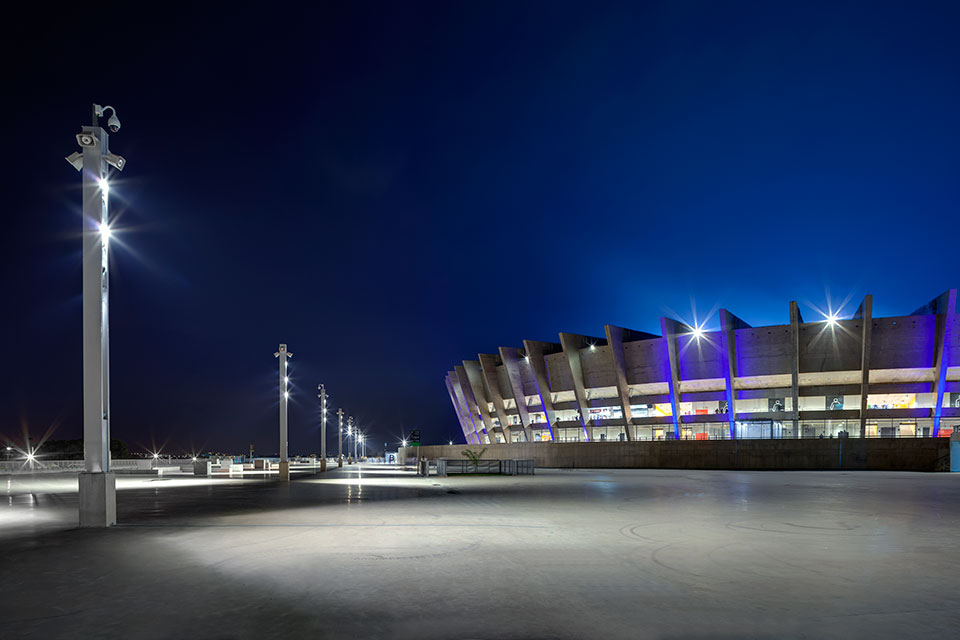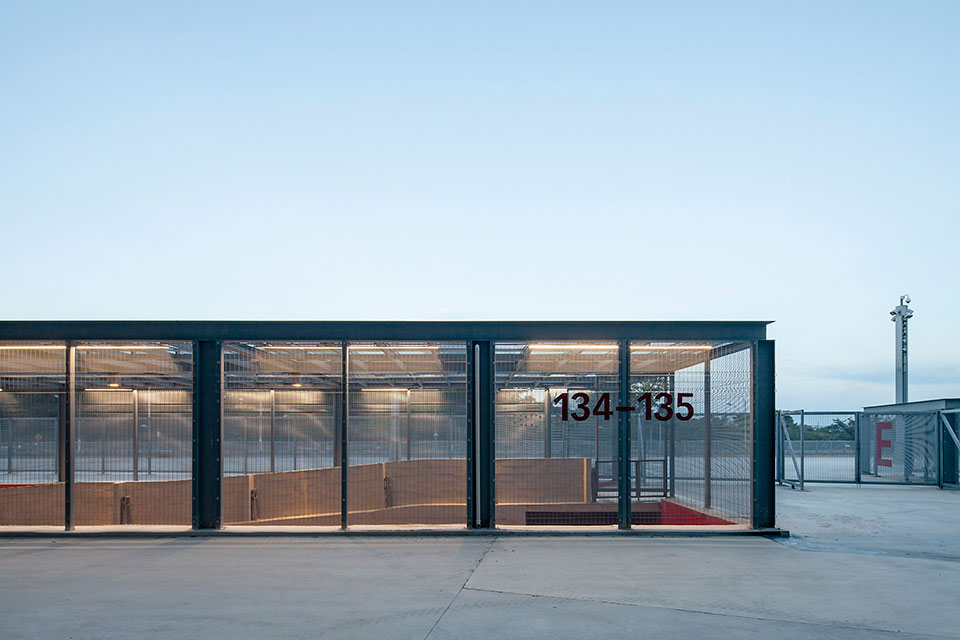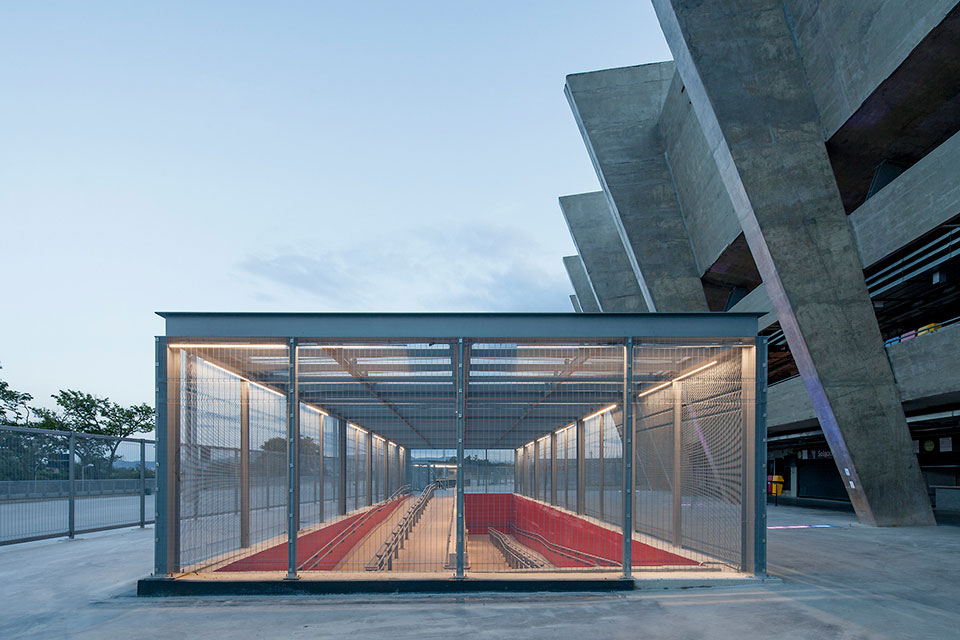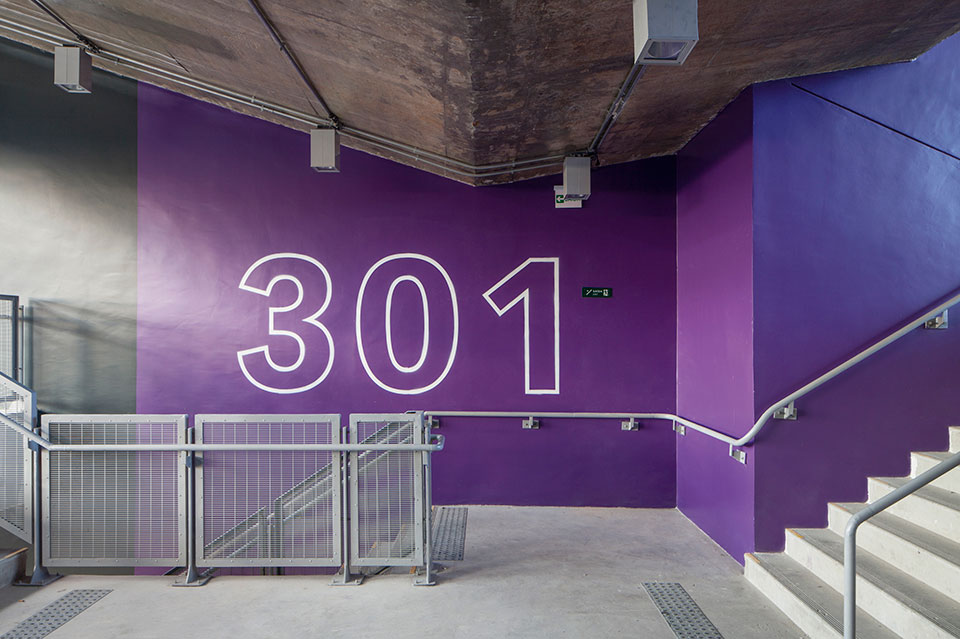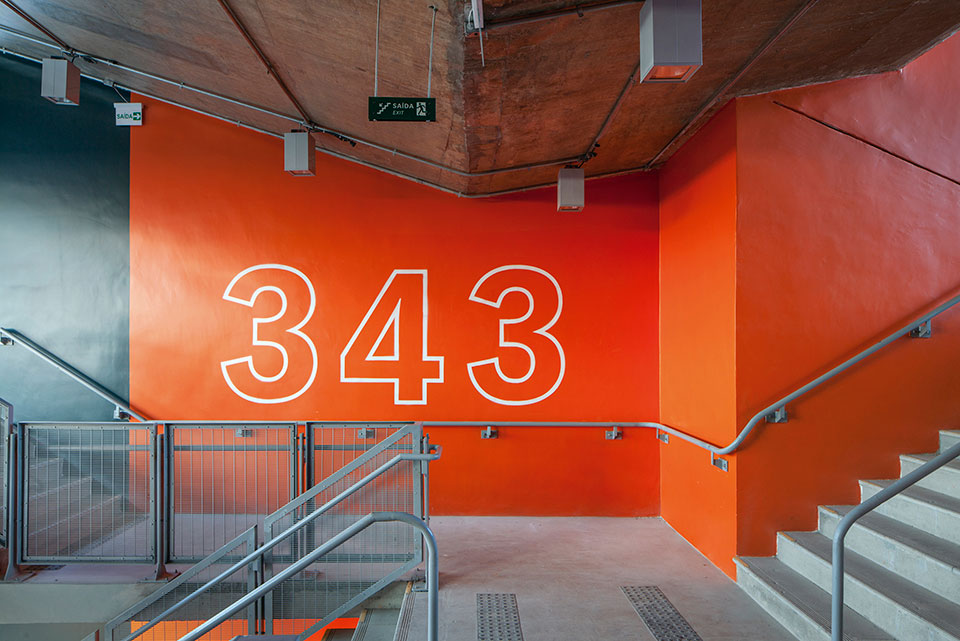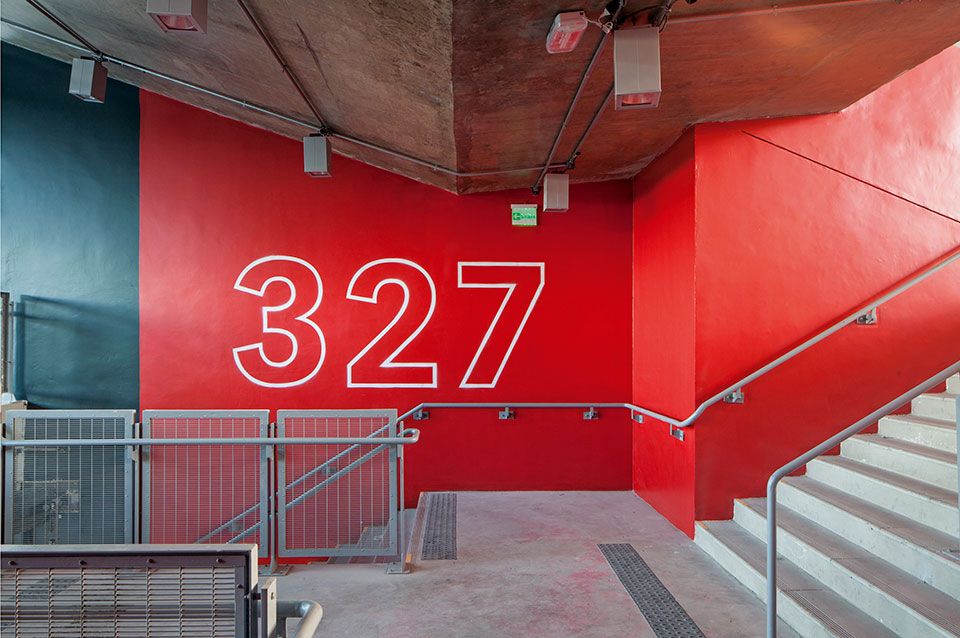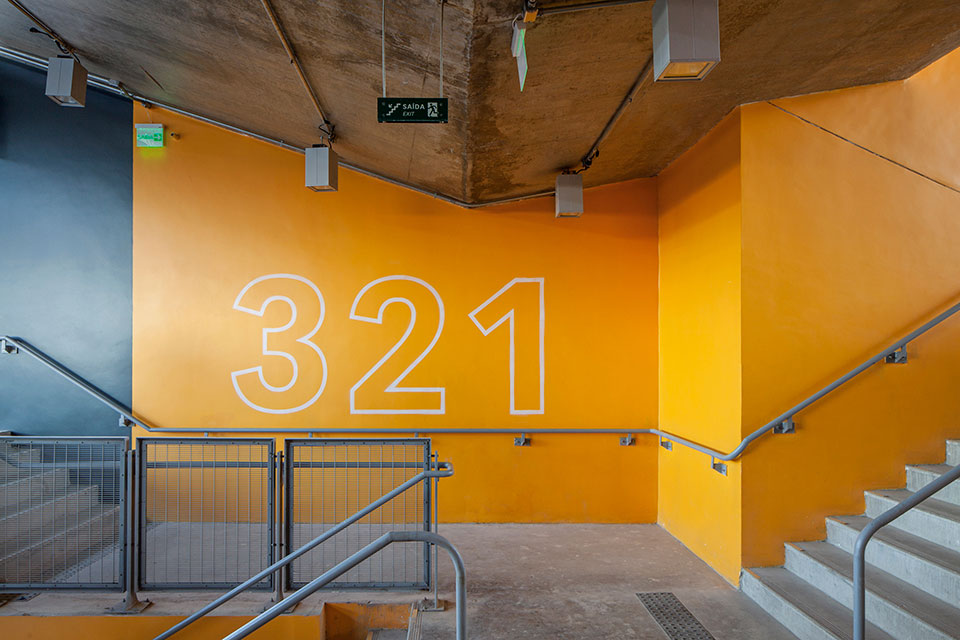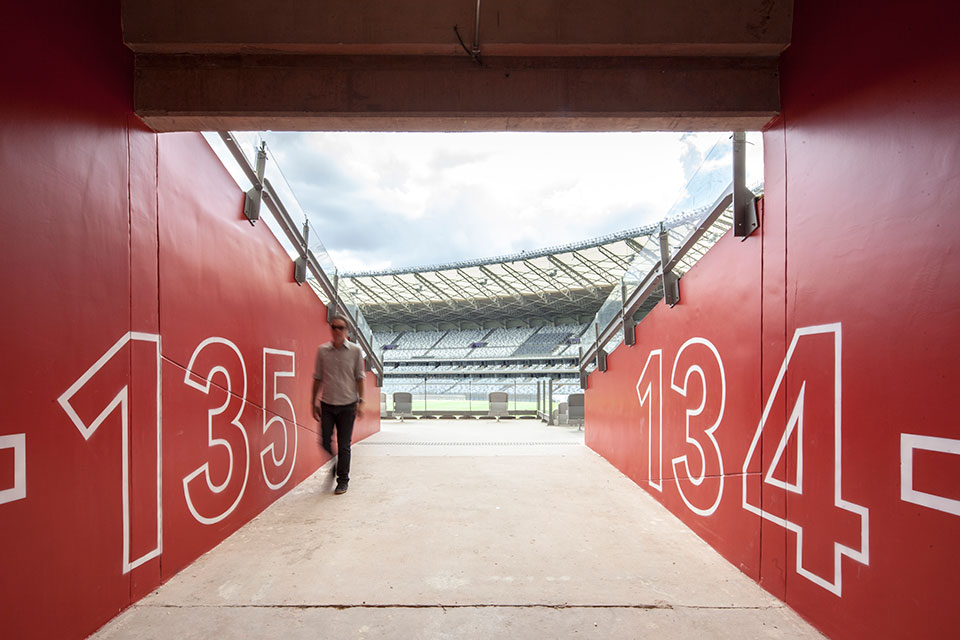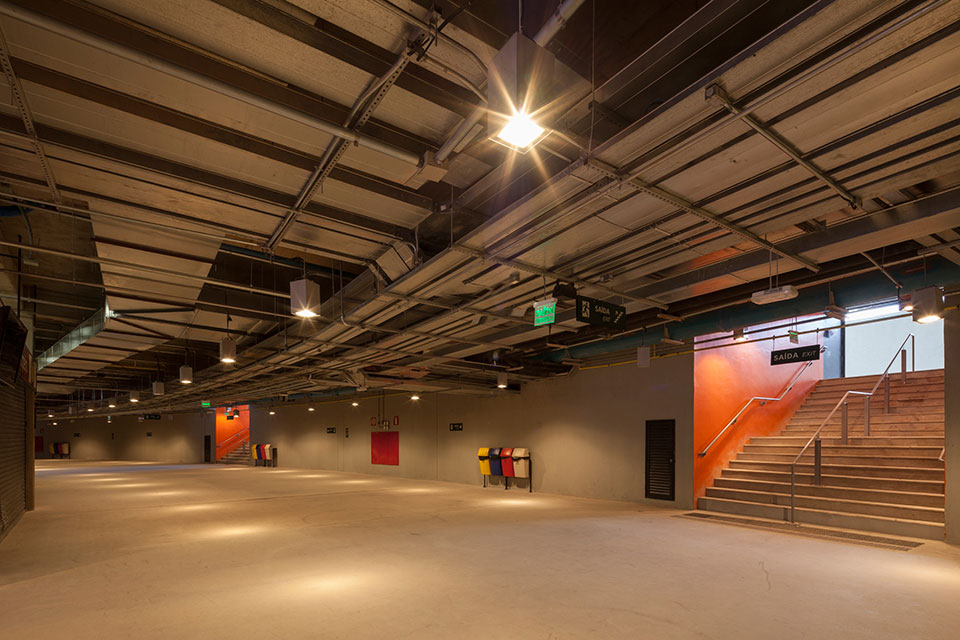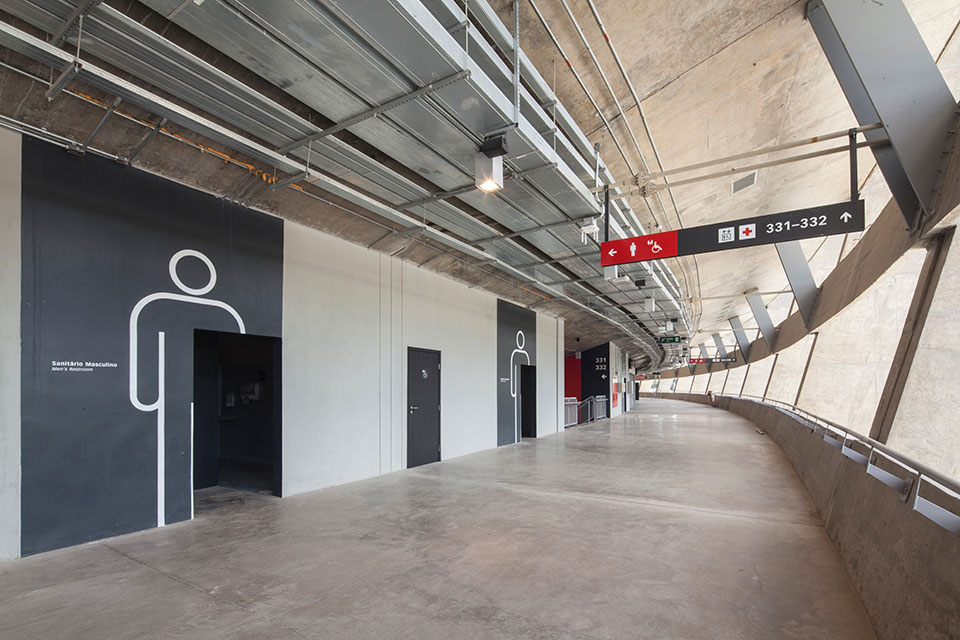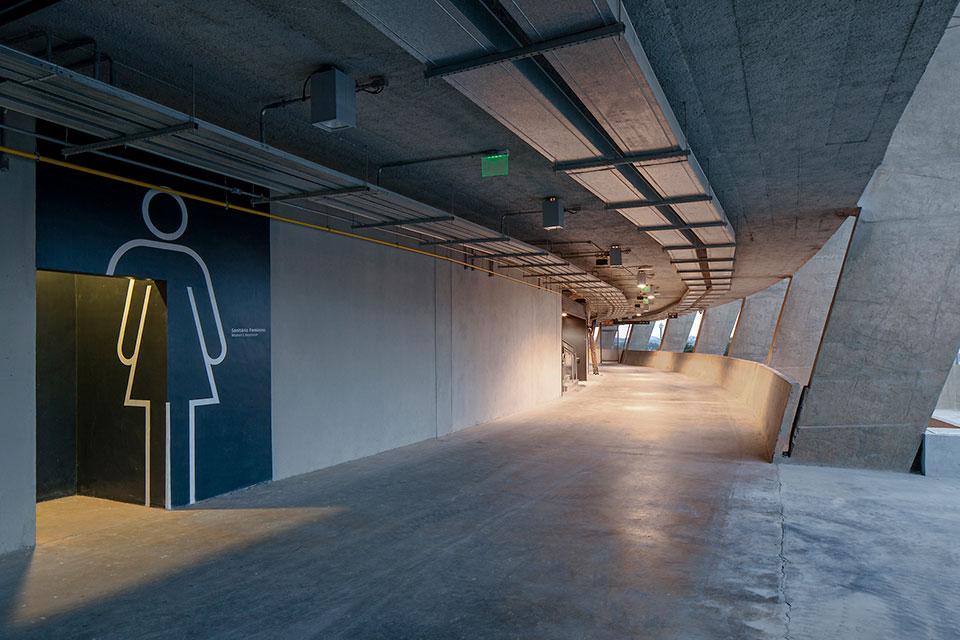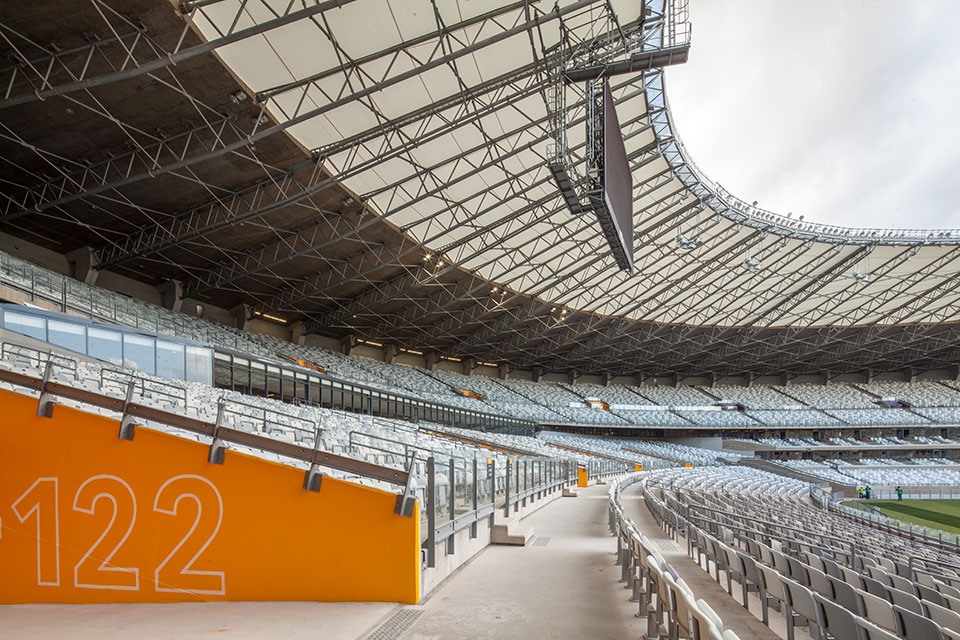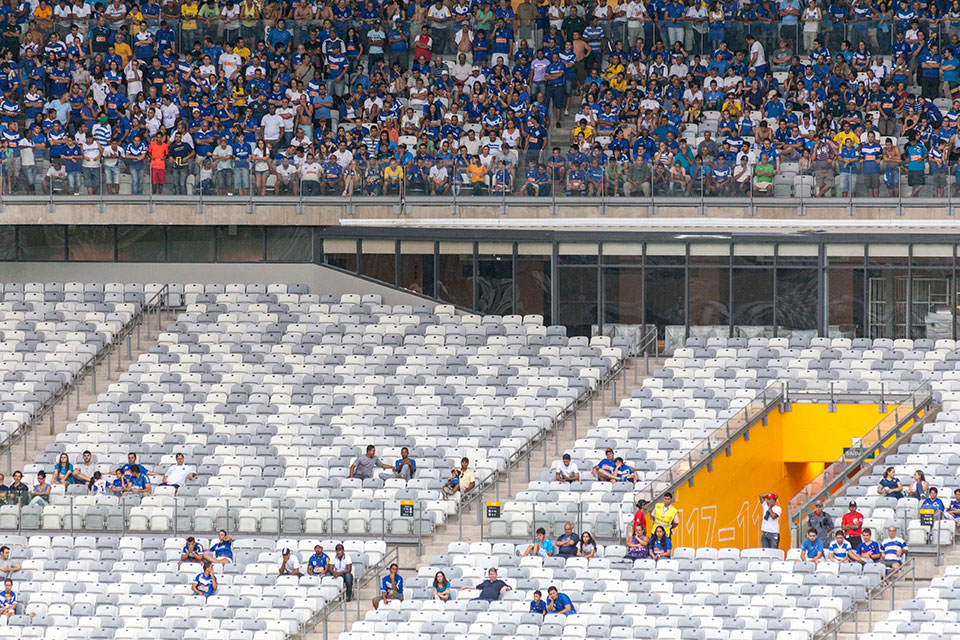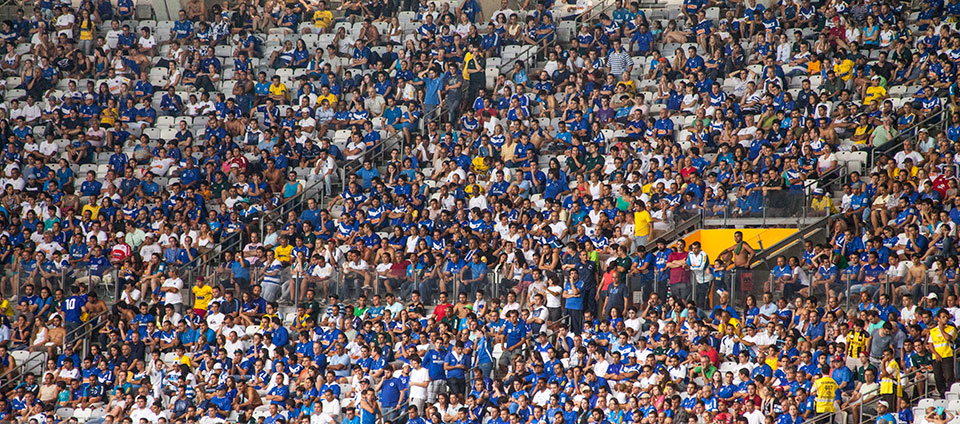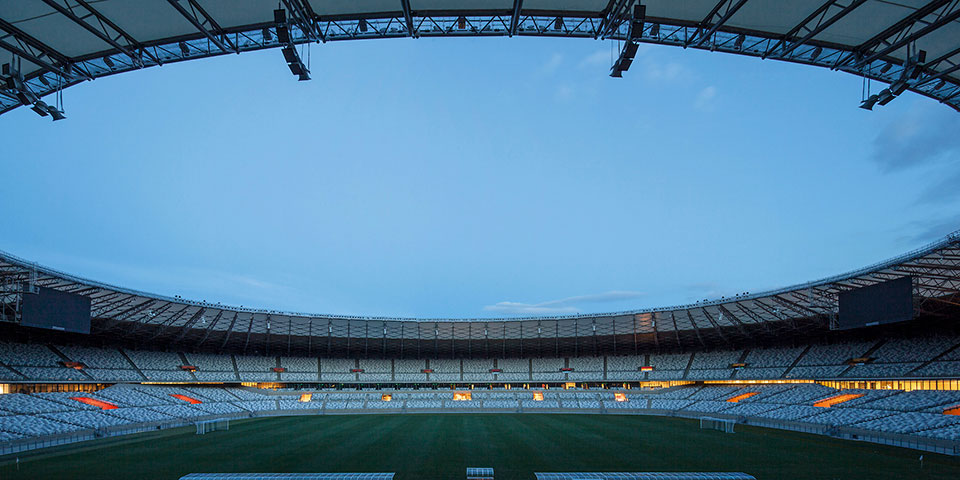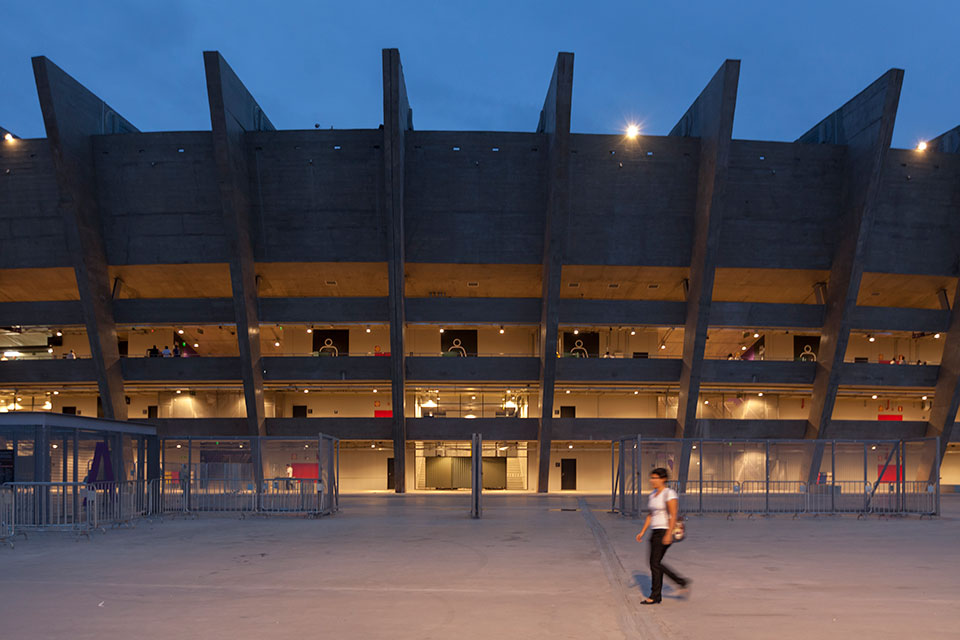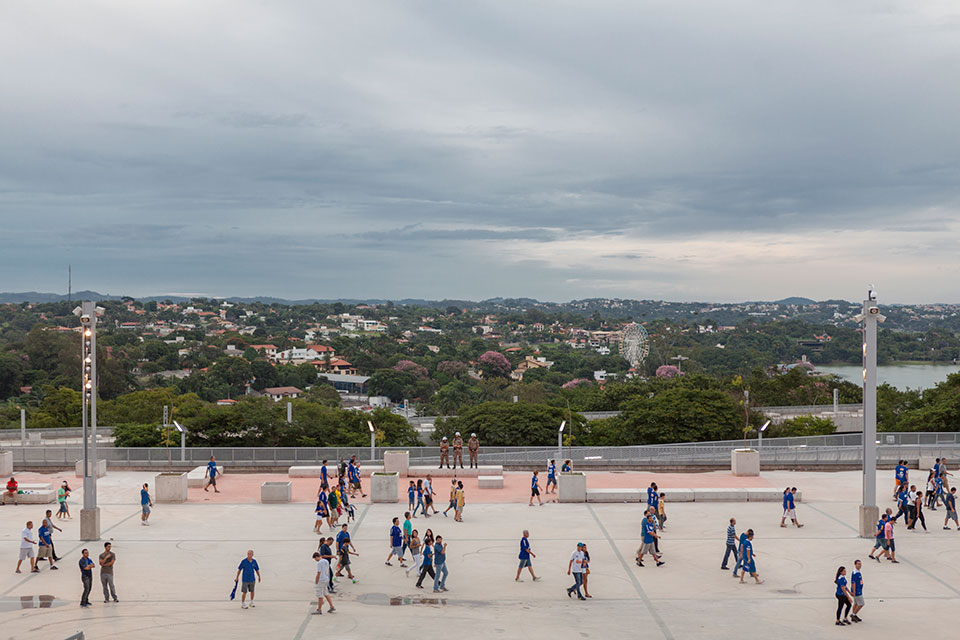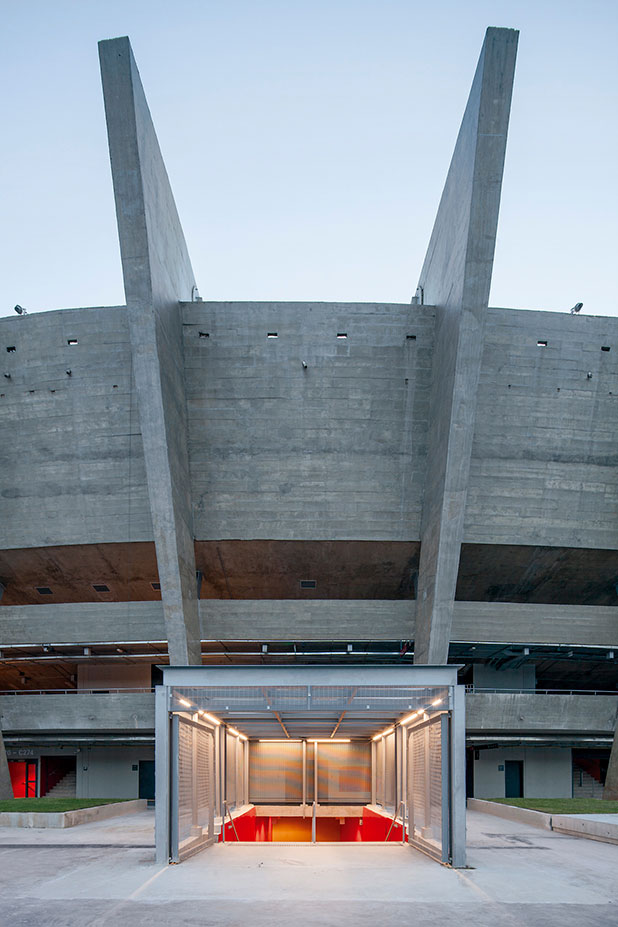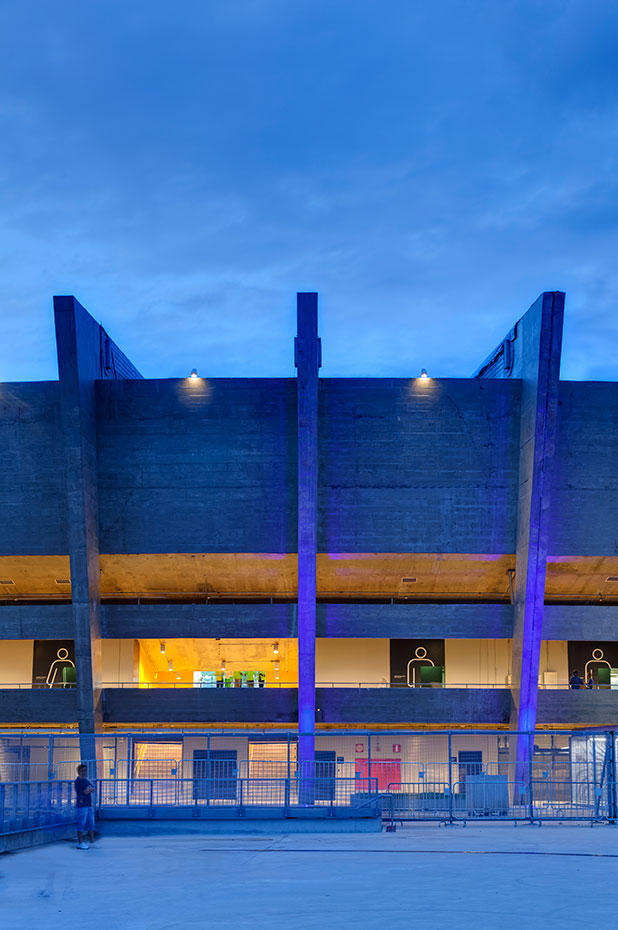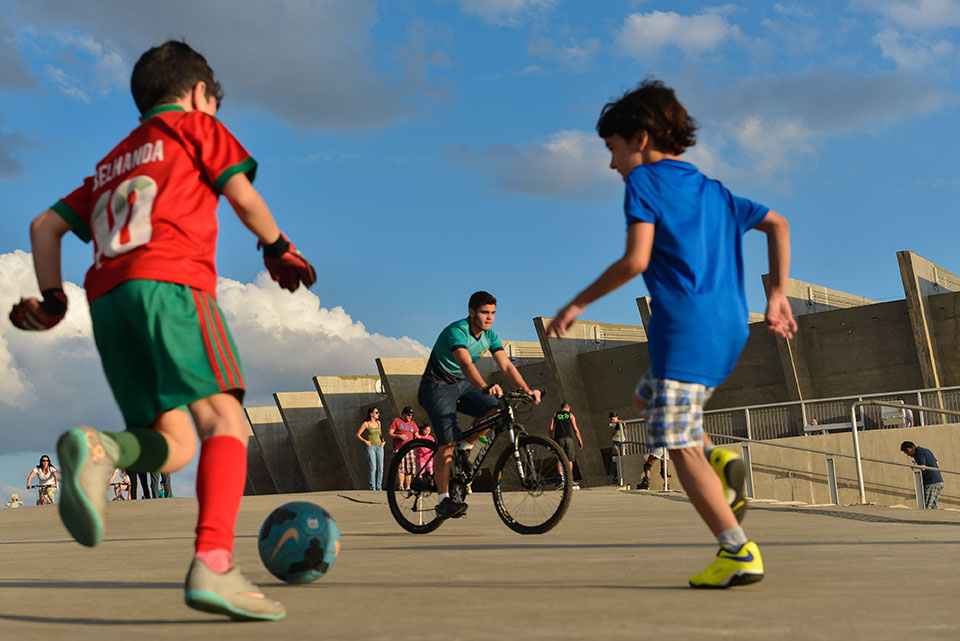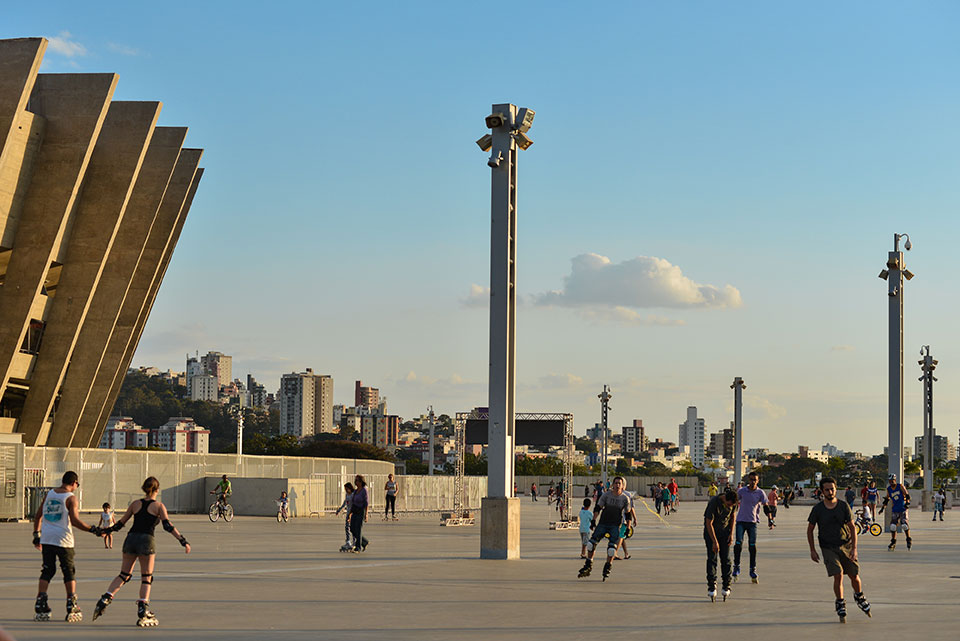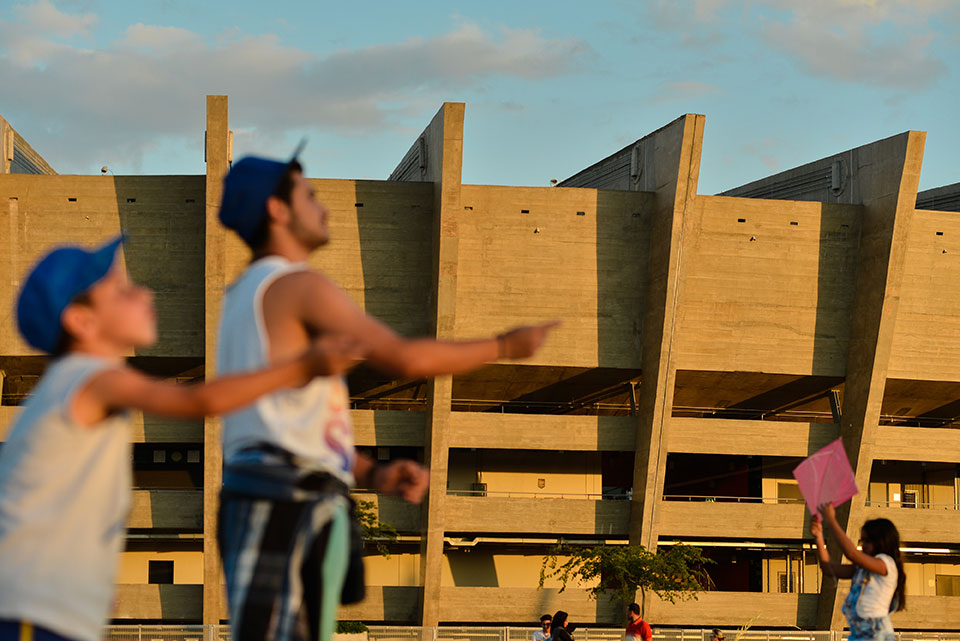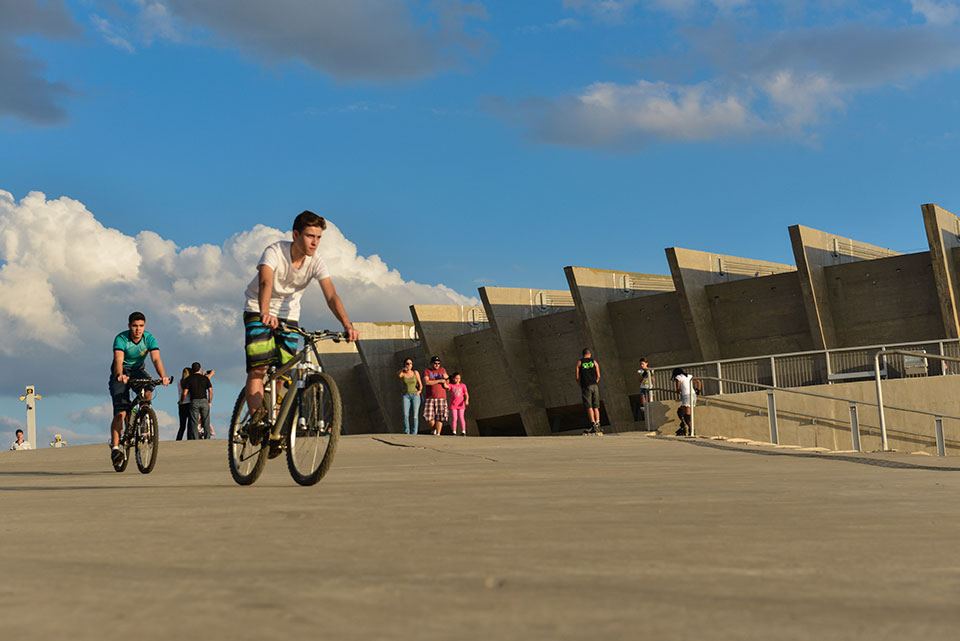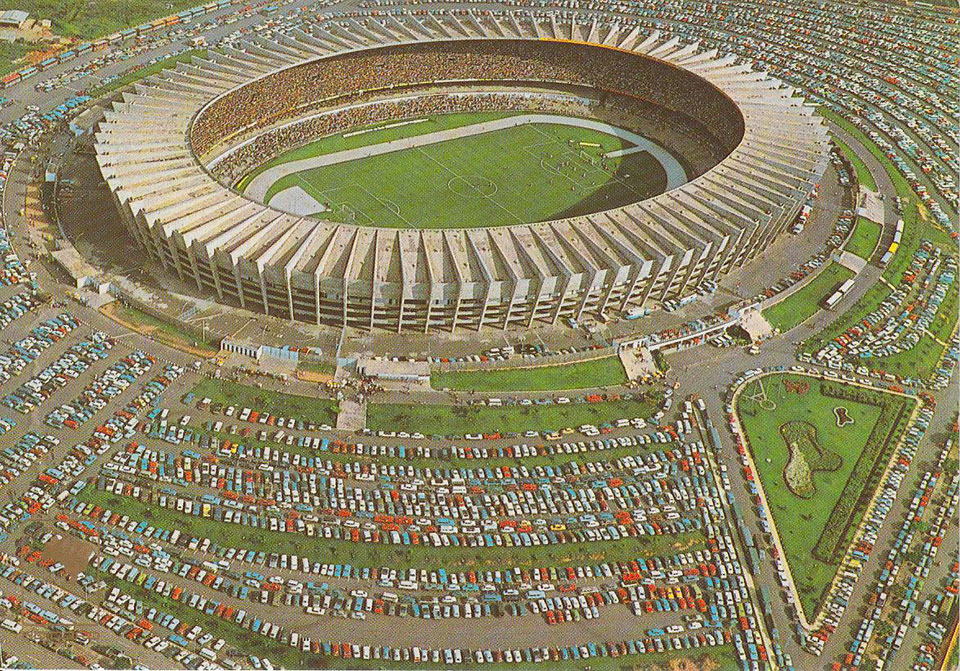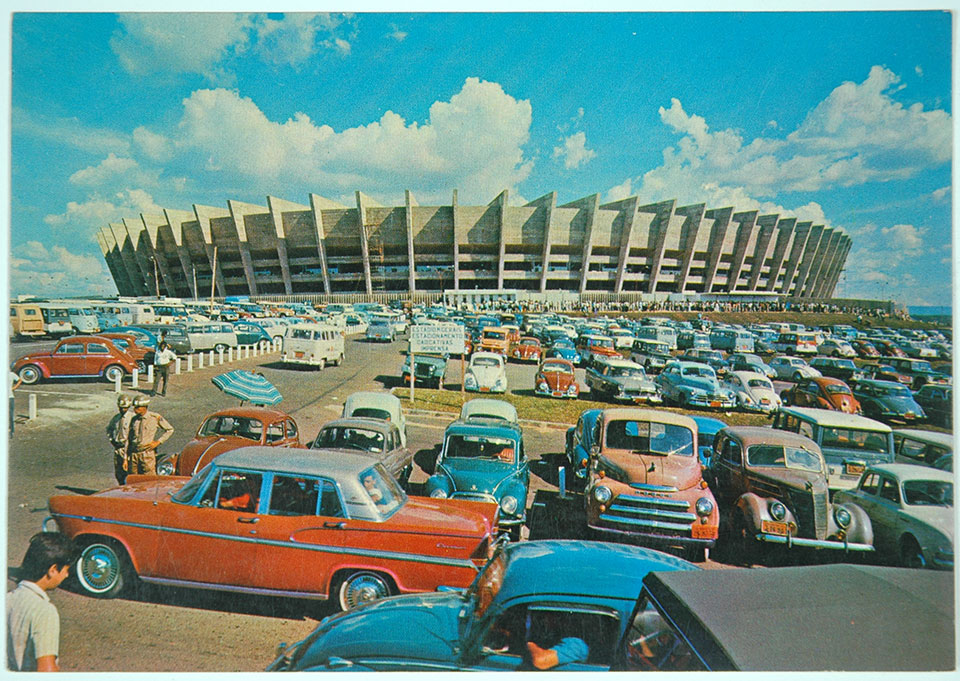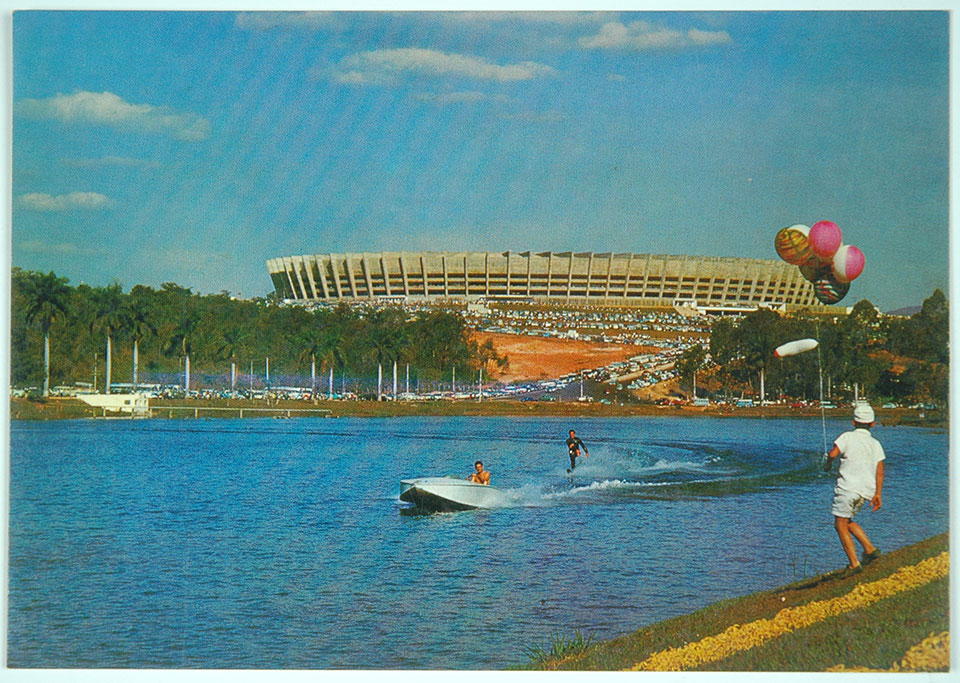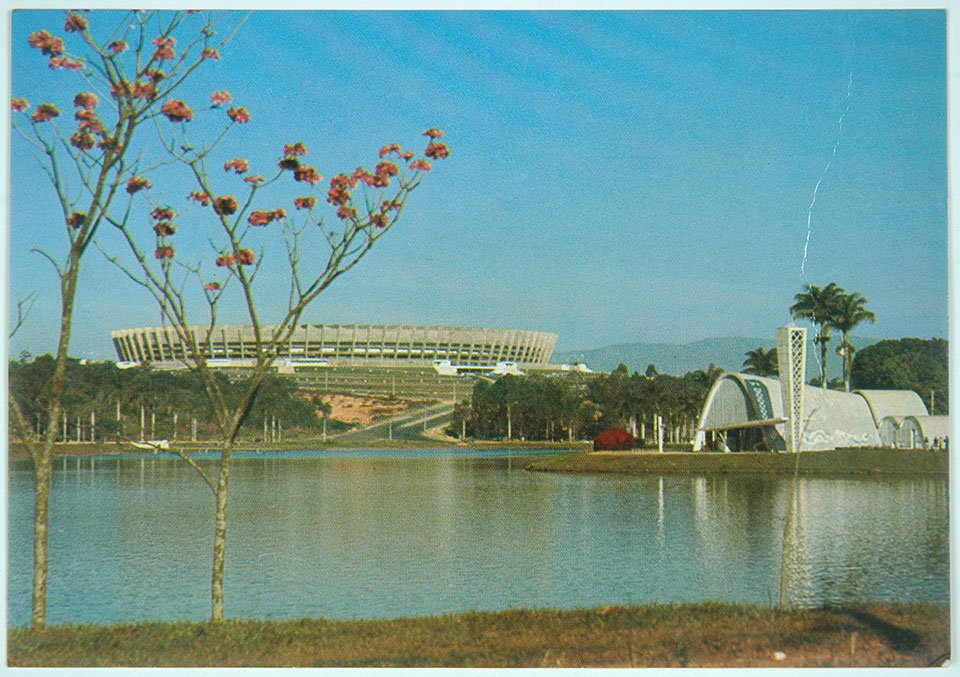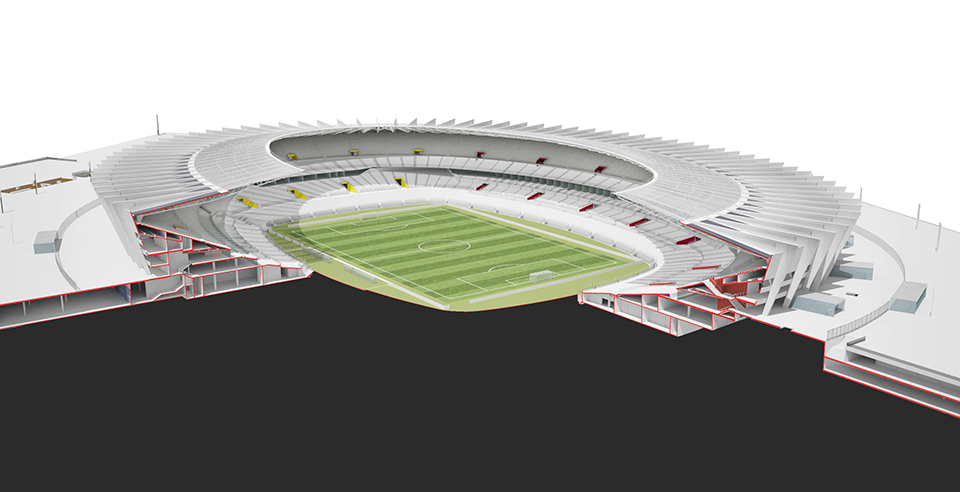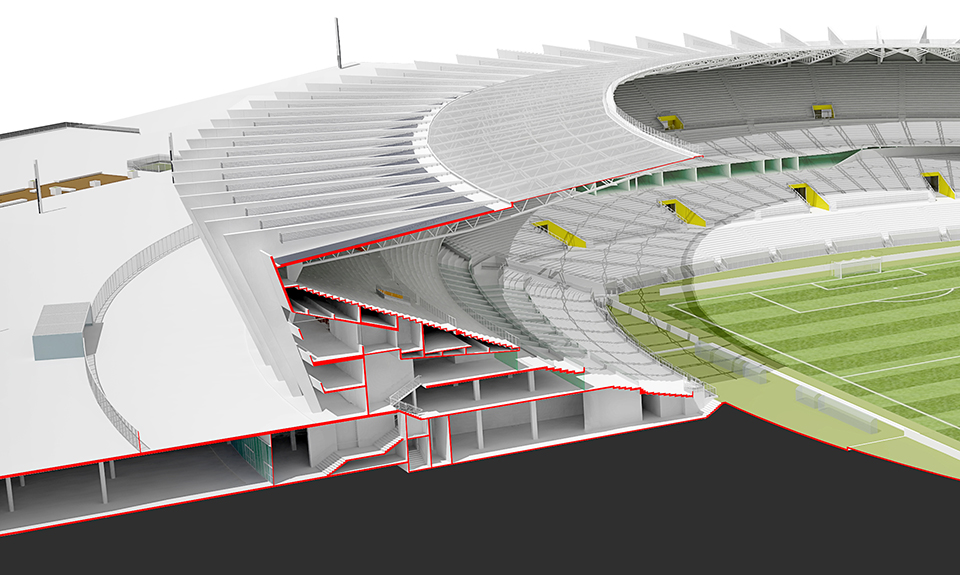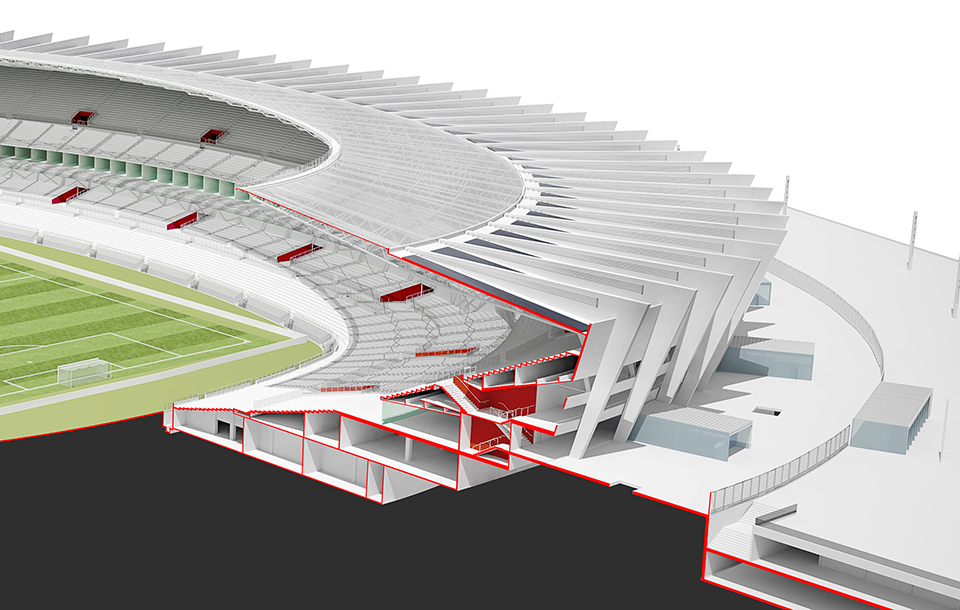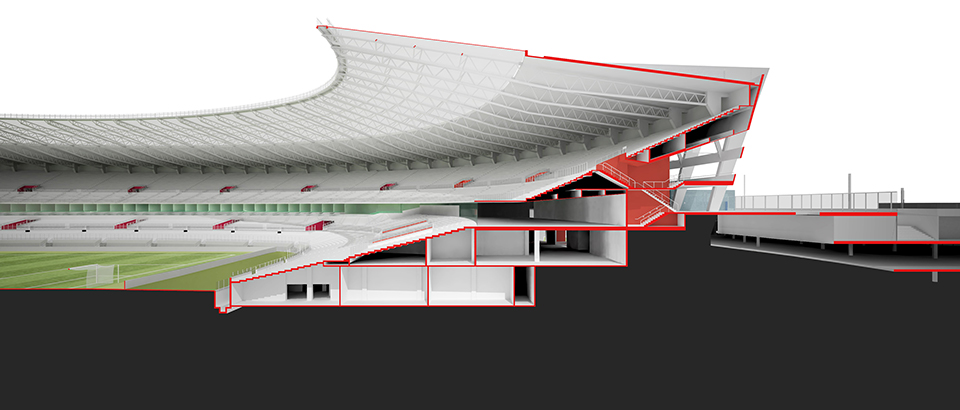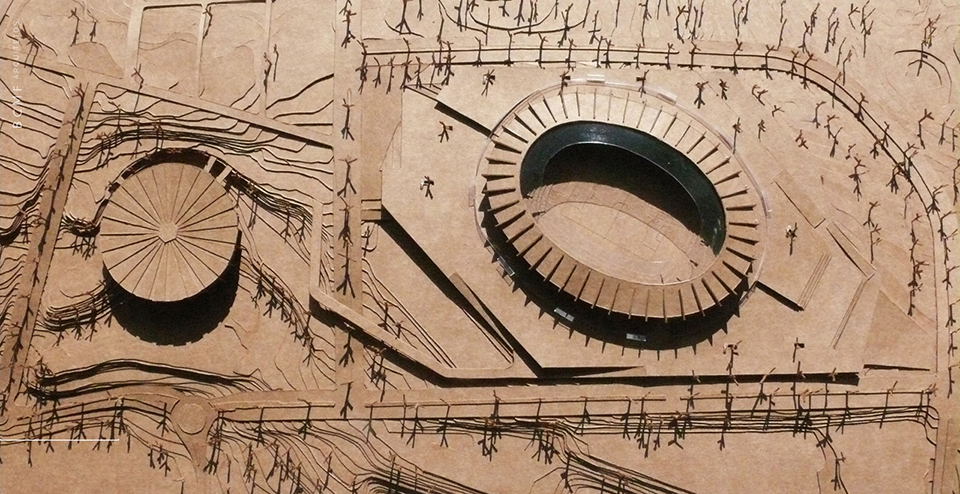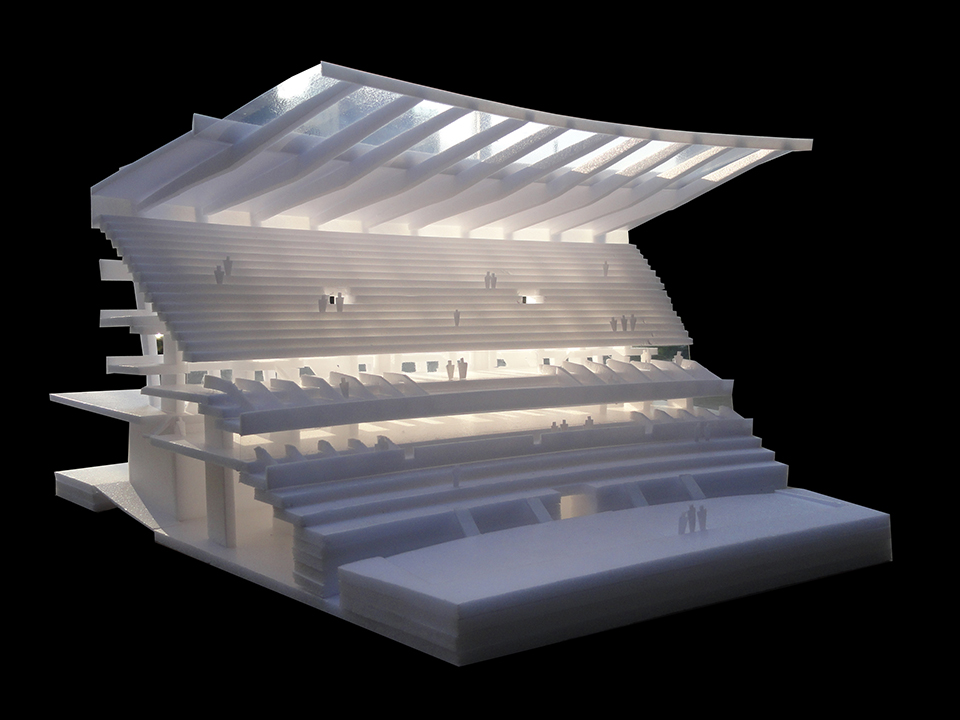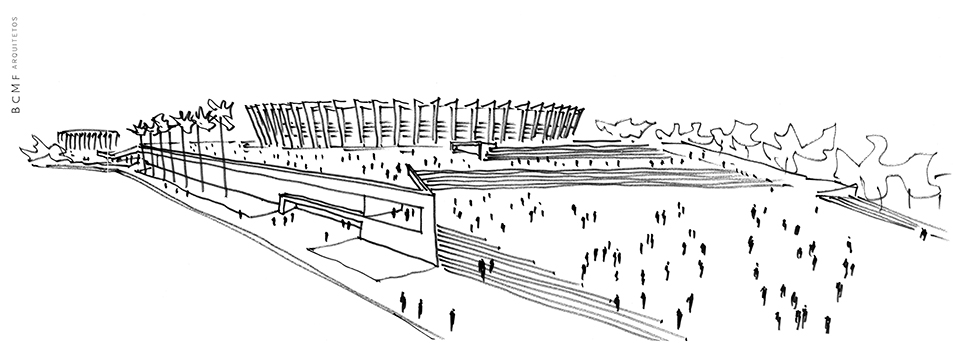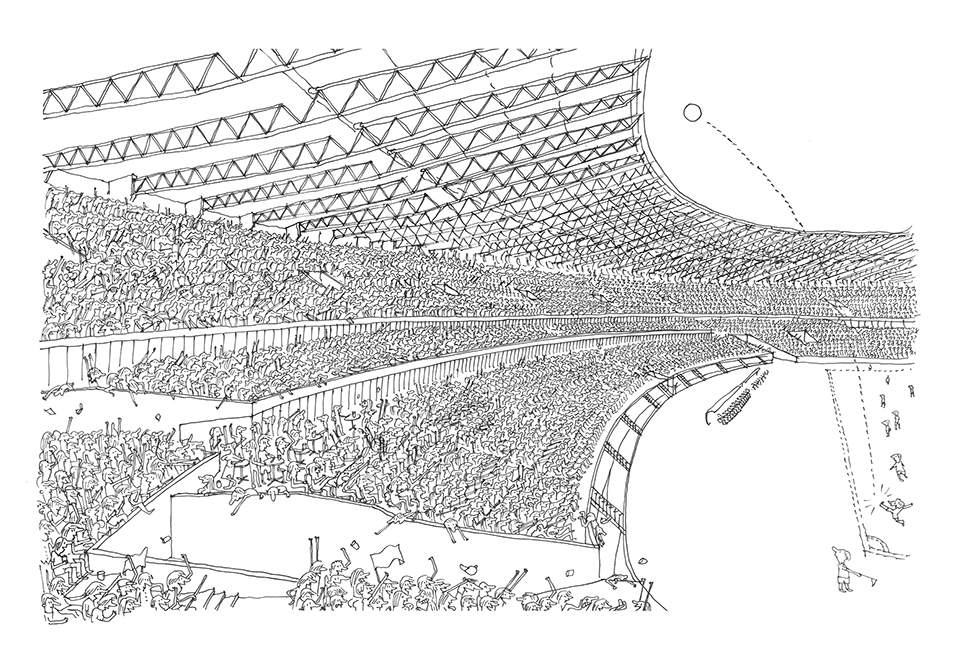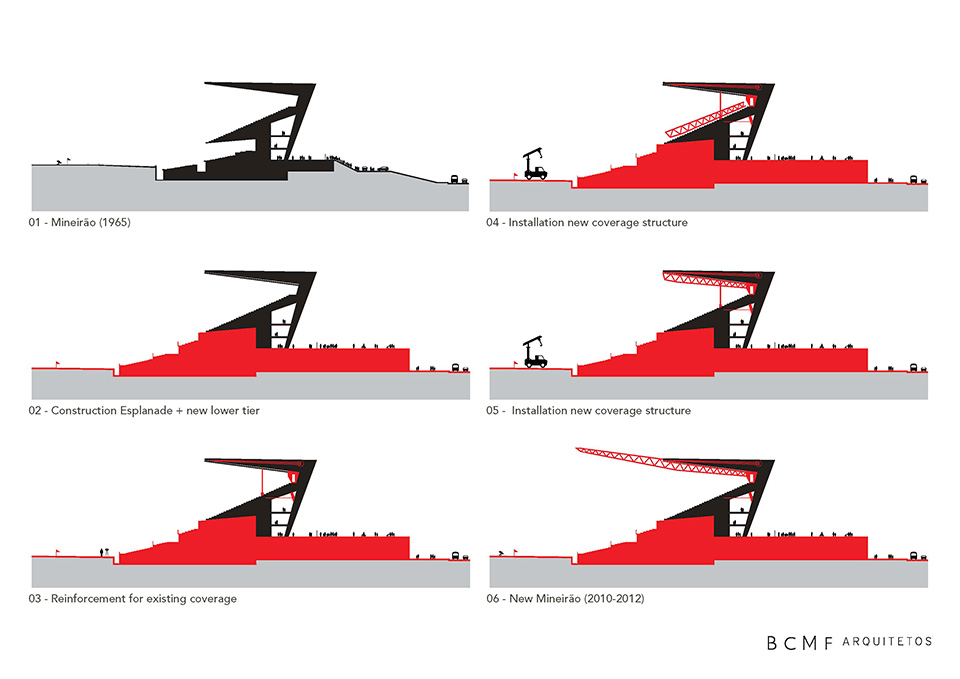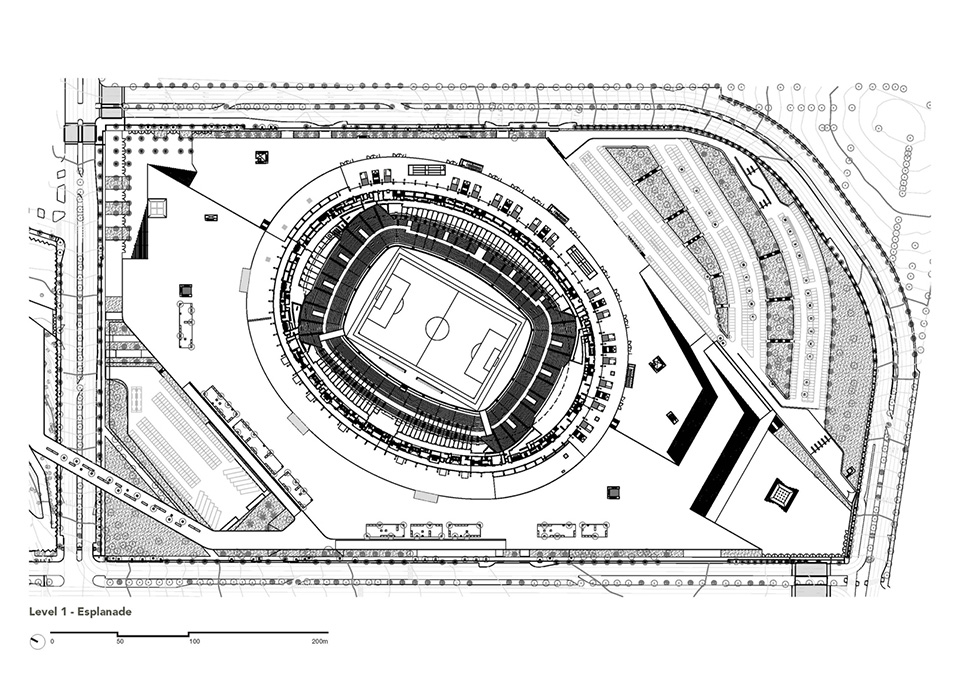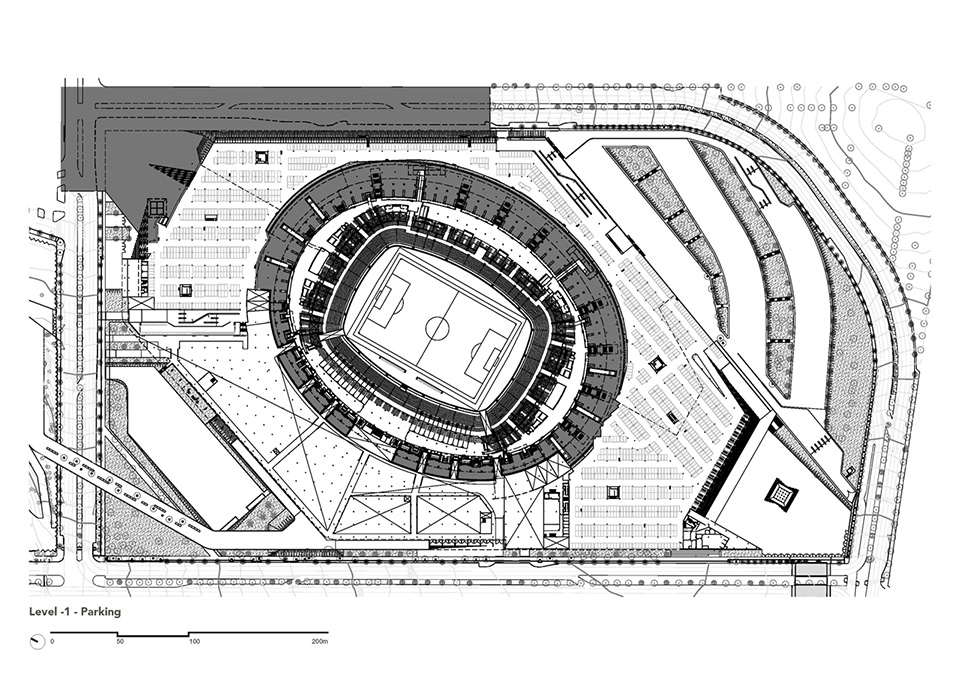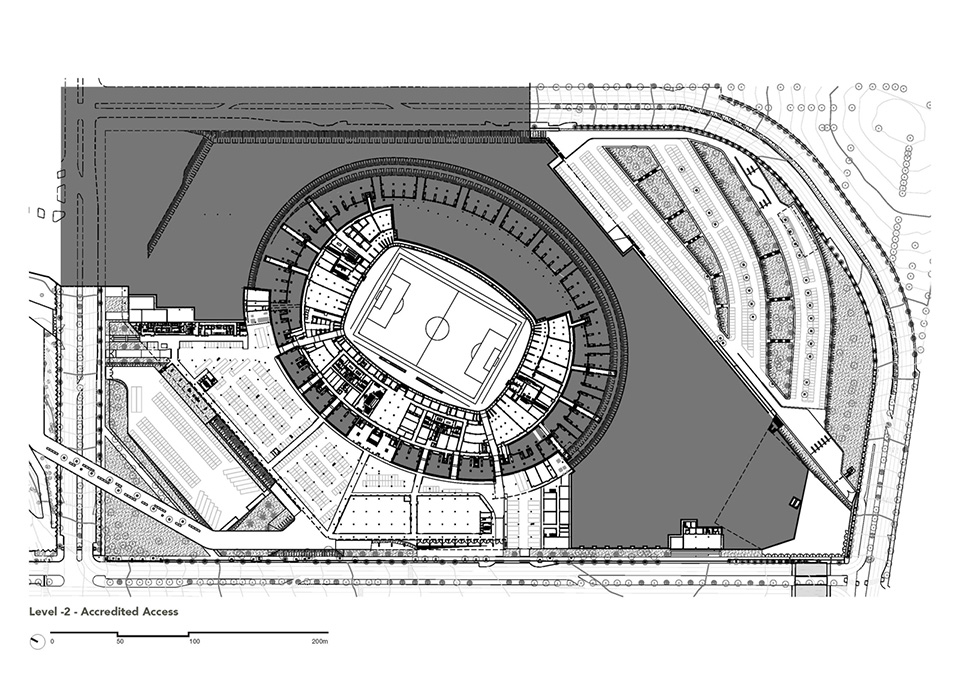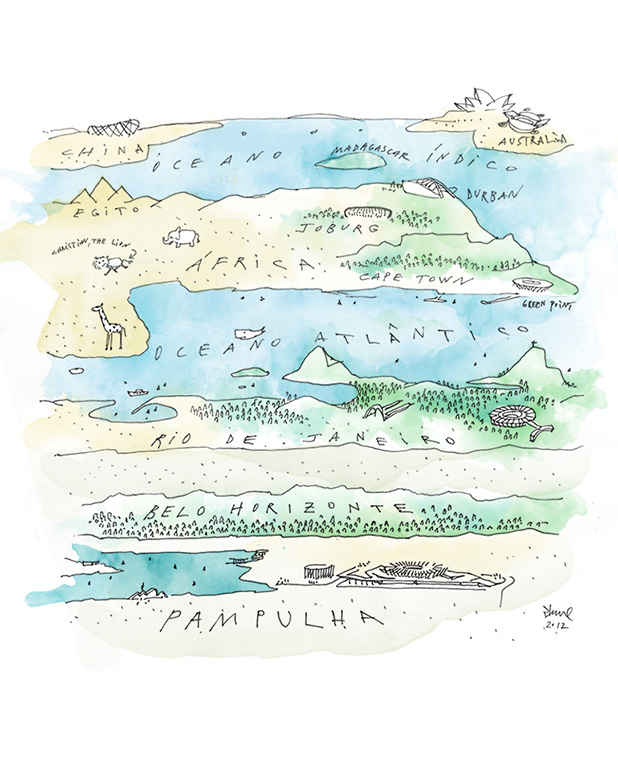New Mineirão
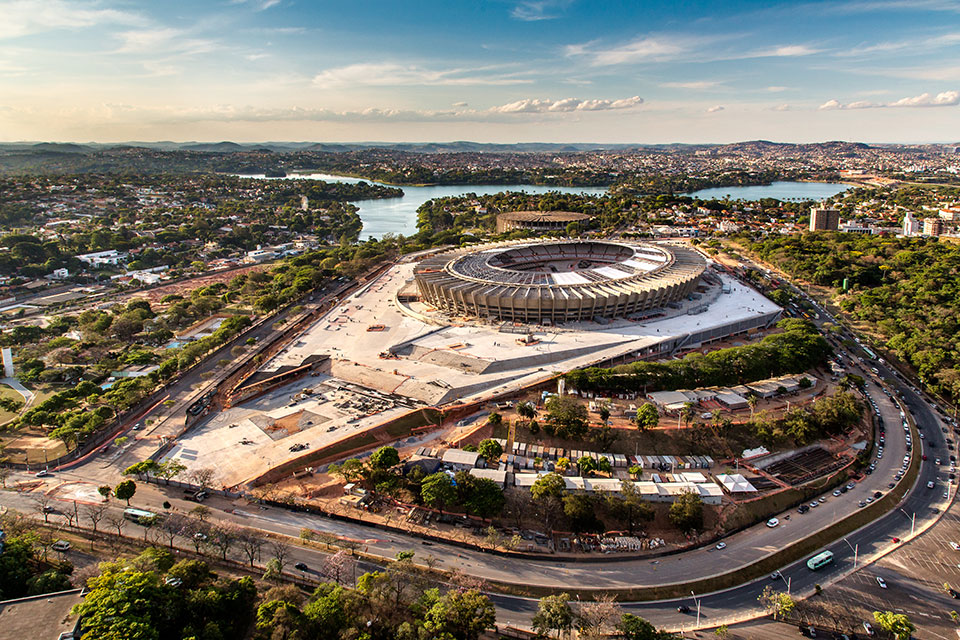
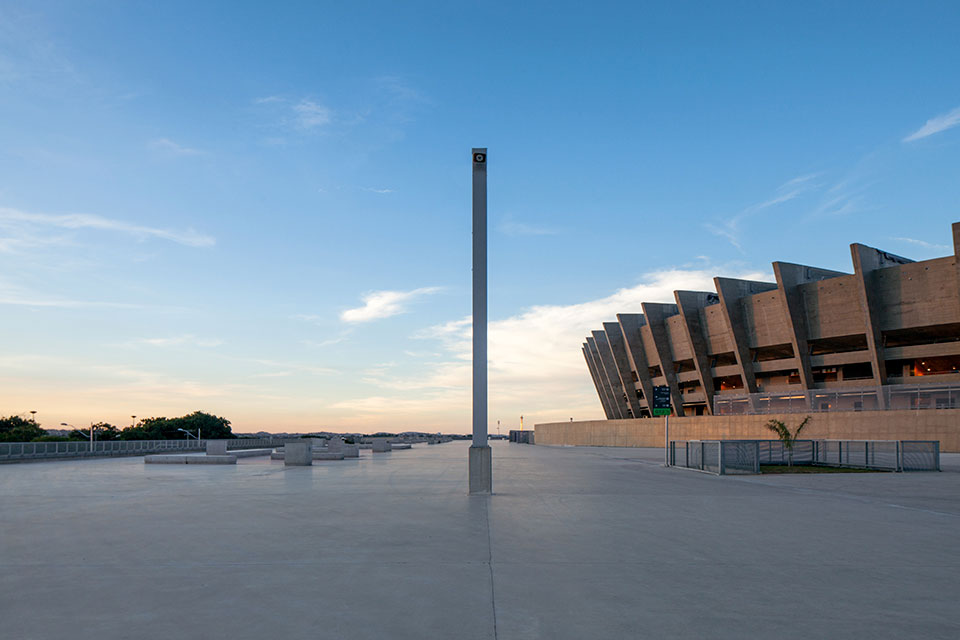
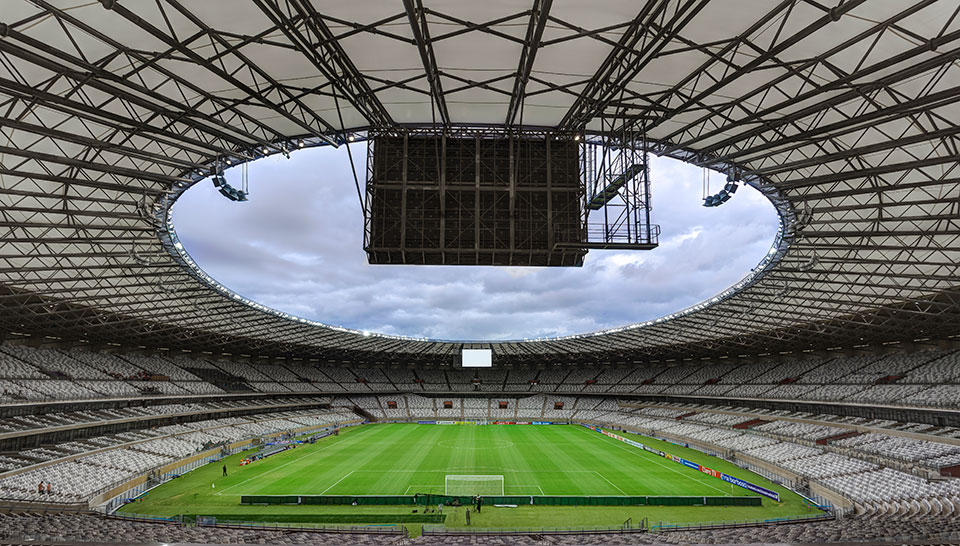
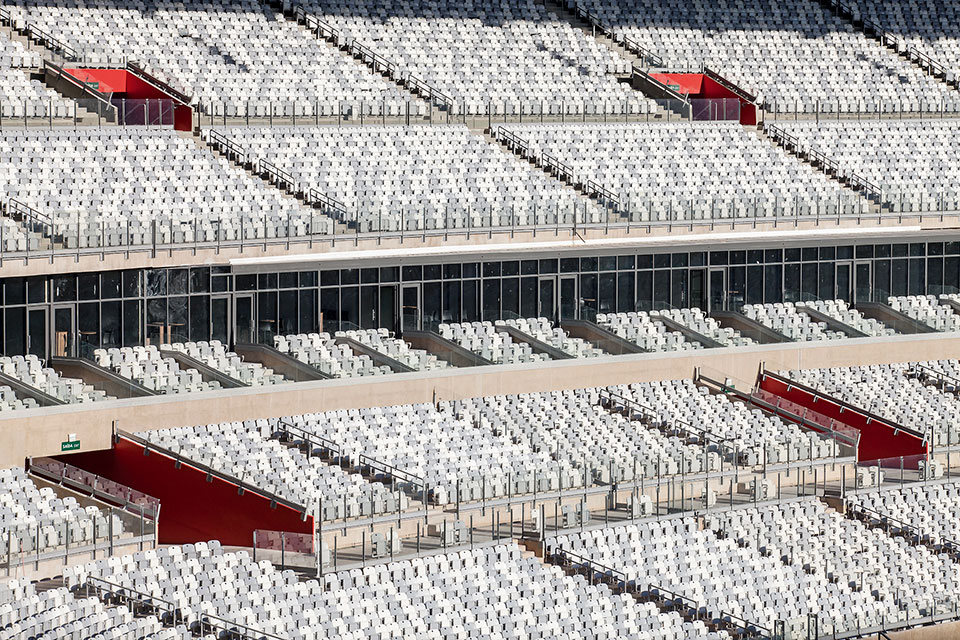
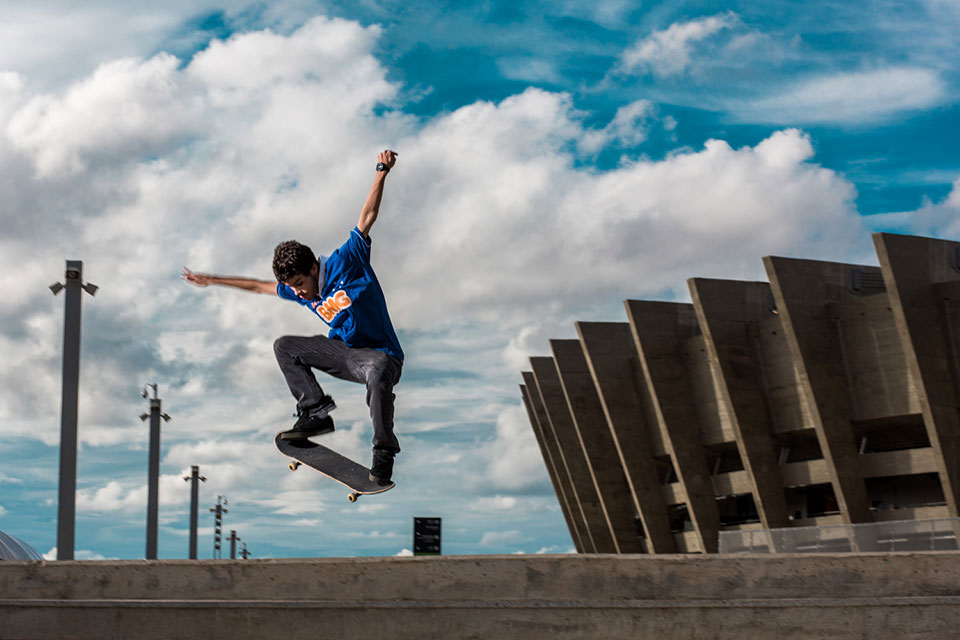
Inaugurated in 1965 (original design by Eduardo Mendes Guimarães and Gaspar Garreto) as the second largest stadium in the world, the legendary Mineirão Stadium is located by the Pampulha Lagoon, close to Oscar Niemeyer’s and Burle Marx seminal work, and Belo Horizonte’s main postcard. As Brazil was chosen to host the World Cup 2014, opportunity came about to transform the traditional stadium, which façade is heritage listed, into a contemporary arena. In this context, to transform the “Pampulha Giant” into a modern multifunctional facility, the interventions proposed are both radical and respectful, reinforcing the monumental original structure within the iconic modernist landscape.
As for the original architecture of the Stadium, only the outer “shell” remained: the 88 structural semi-porticos, the concrete roof and the upper tiers. The rest of the “core” was completely rebuilt to guarantee the total overhaul inside the arena, including the new extension of the roof (a system of steel trusses and self-cleaning membrane that works together with the existing concrete structure which was reinforced), all the new program and infra-structure, besides the lowering of the pitch and the lower tiers redesign, improving the sight-lines for the new capacity of 62.160 seats.
The renovation on the outside is total, with a new 200.000 m² operational platform separating the spectators´ from the accredited flows. The “Esplanade” includes various facilities around the stadium, opened to the public as an immense landscaped plaza, visually linked to the Pampulha Lagoon. This platform is sculpted and molded to the site as an artificial topography, integrated with the immediate surroundings, being perceived as a continuation of the street domain. The public is attracted by programs strategically distributed throughout the esplanade, creating legacy areas with potential to generate activities and movement during all day, seven days a week.
The project has also sustainable features, being the first solar powered stadium in the world and the first in Brazil with PLATINUM LEED Certification. After the event, many operational areas which are specific for the 2014 World Cup will have other uses (institutional, commercial and leisure programs), contributing for the economic sustainability of the complex.
The New Mineirão points out ways in which sports mega events can leave a lasting legacy to the host-cities. Here, even though interventions are made on a stadium scale, they respond to the demands of larger scales, the neighborhood, the landscape and the city itself. Therefore, the urban domain is invited into the realm and scope of the architecture.
